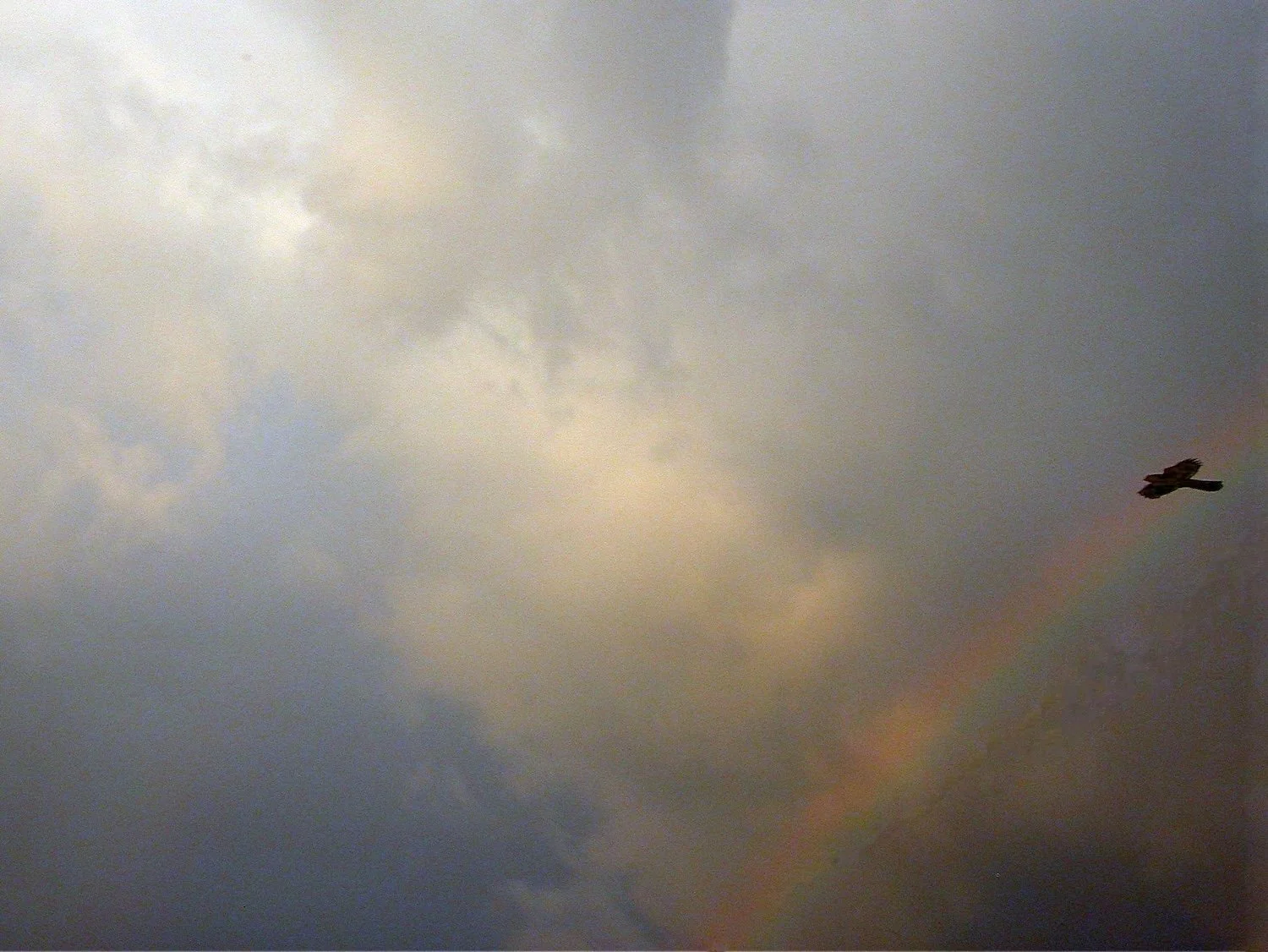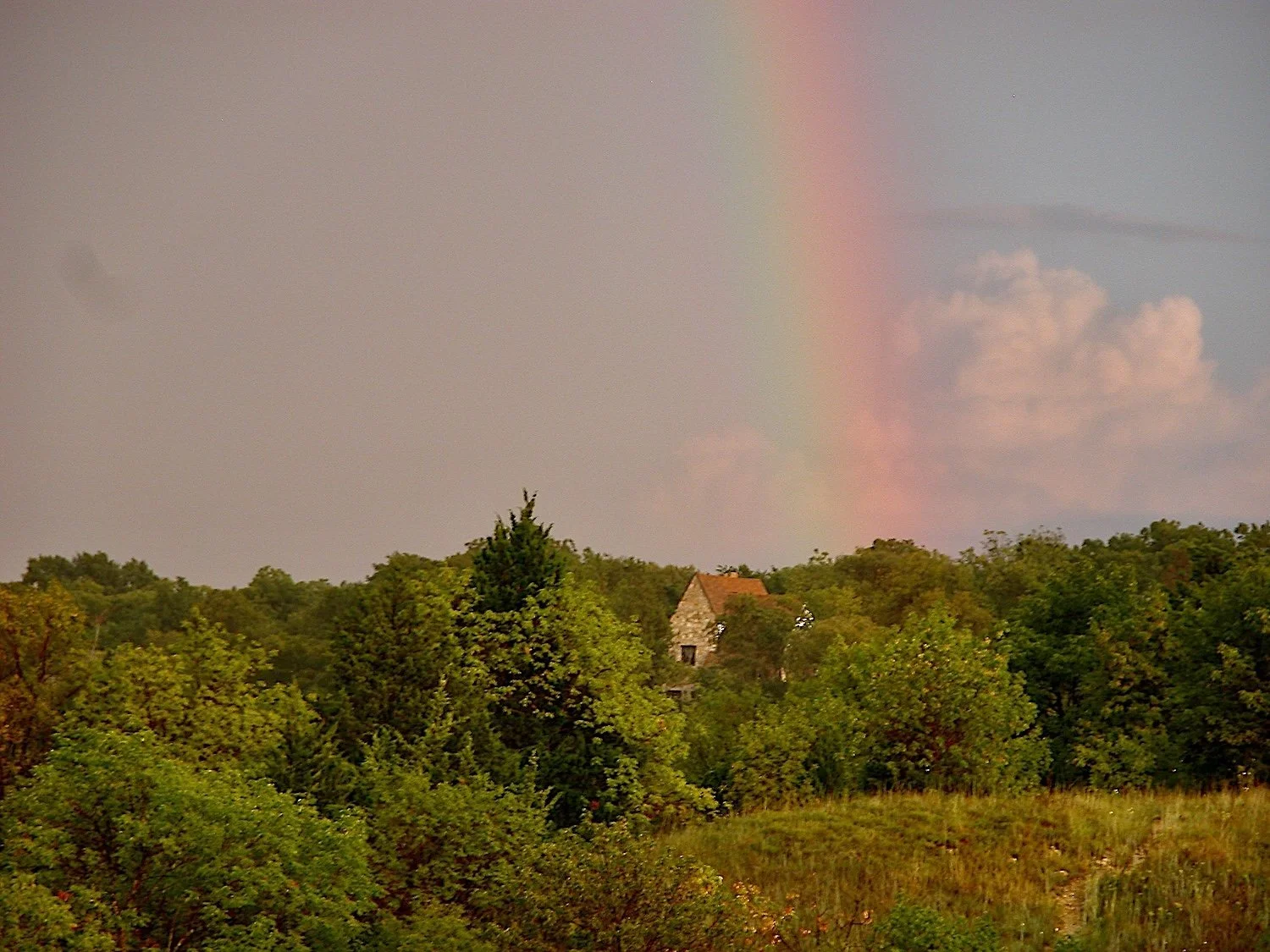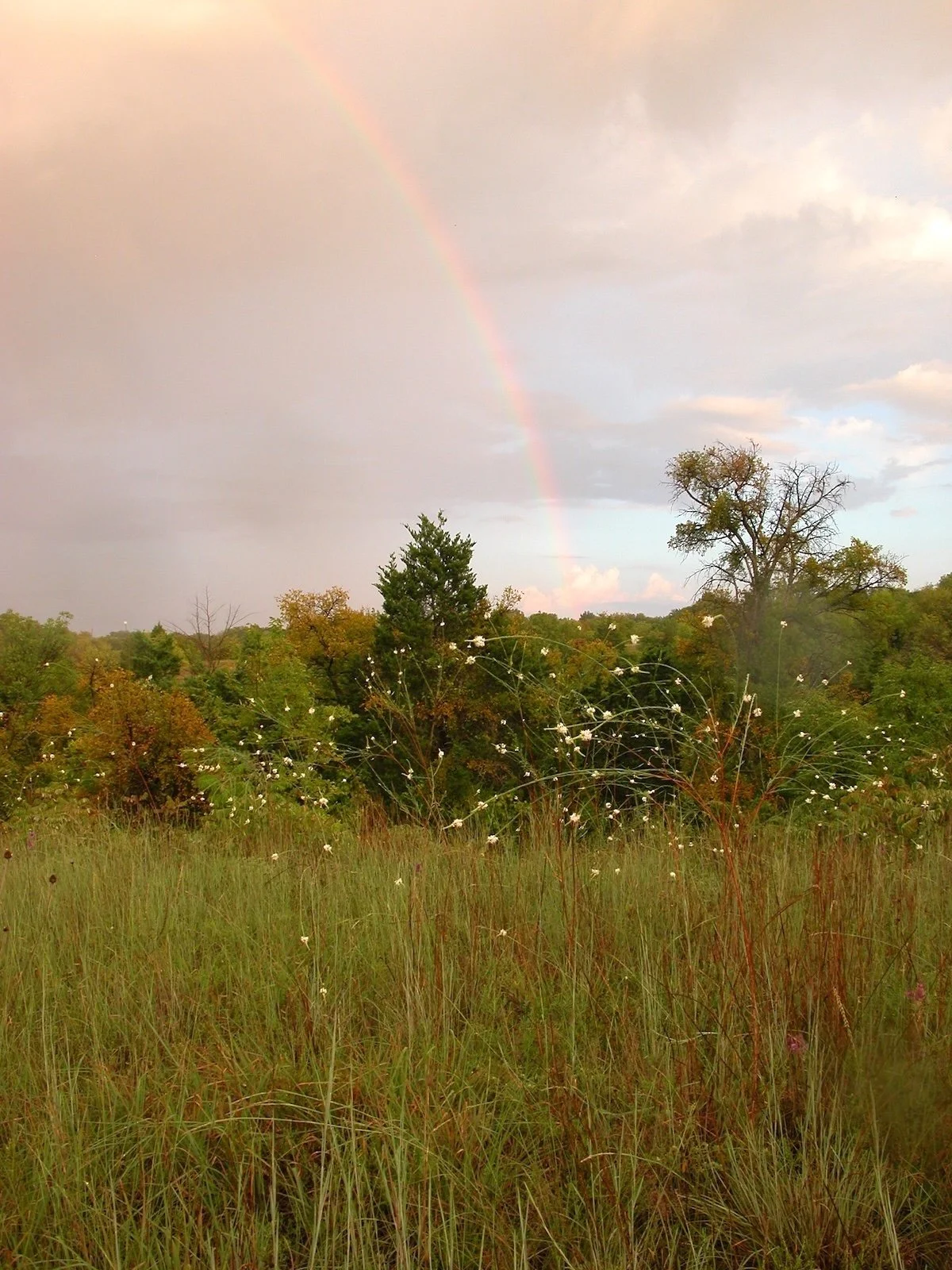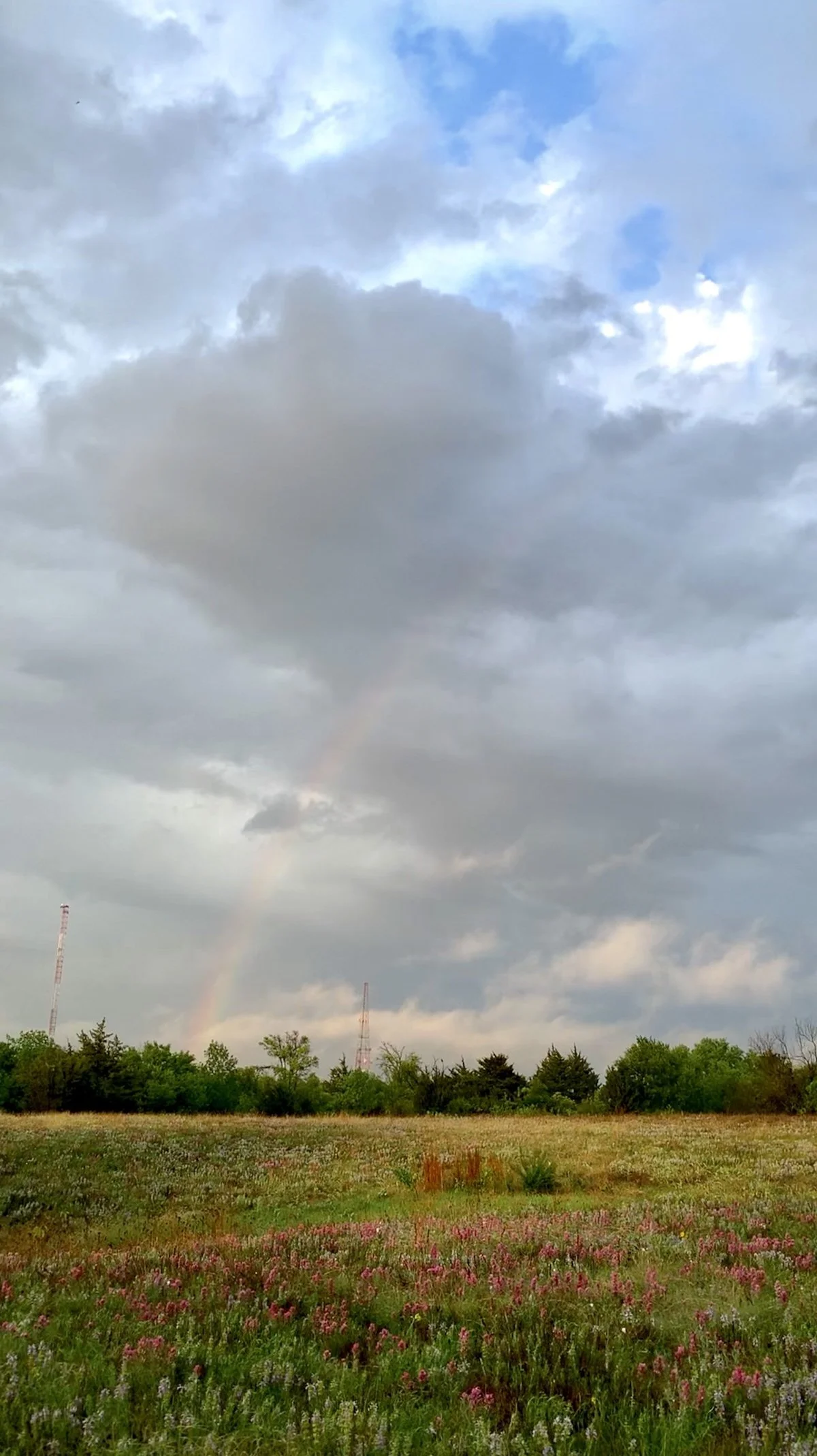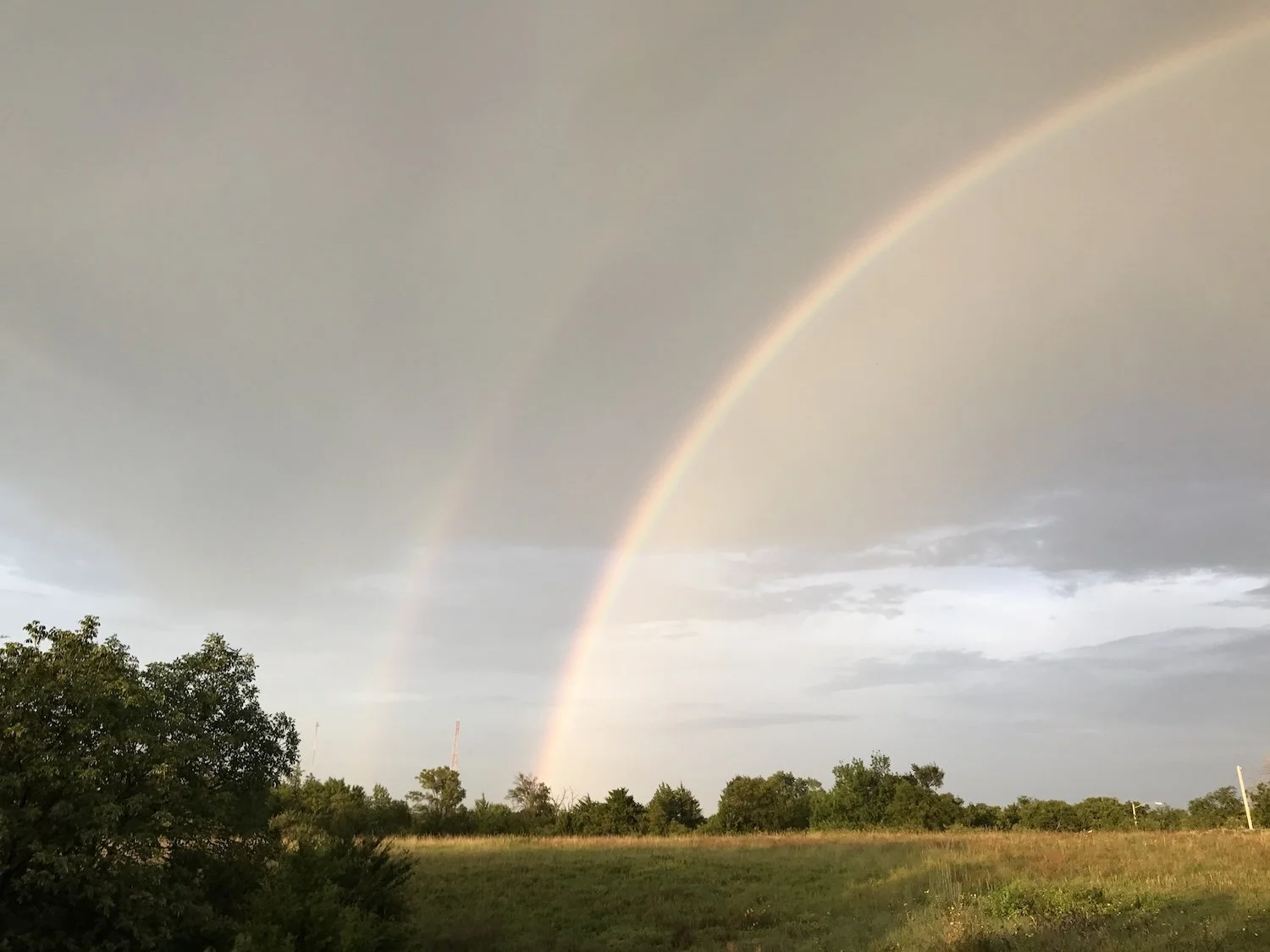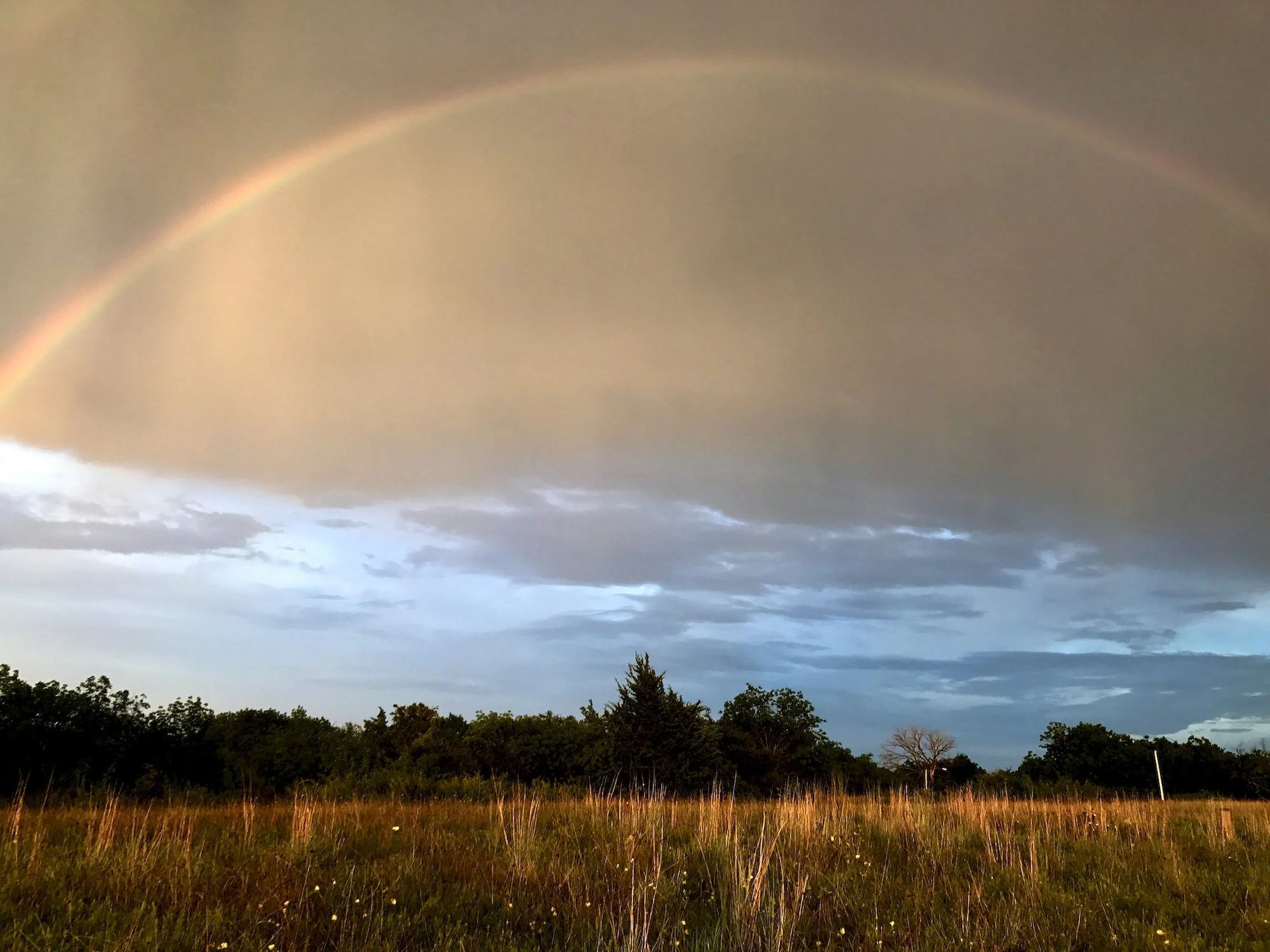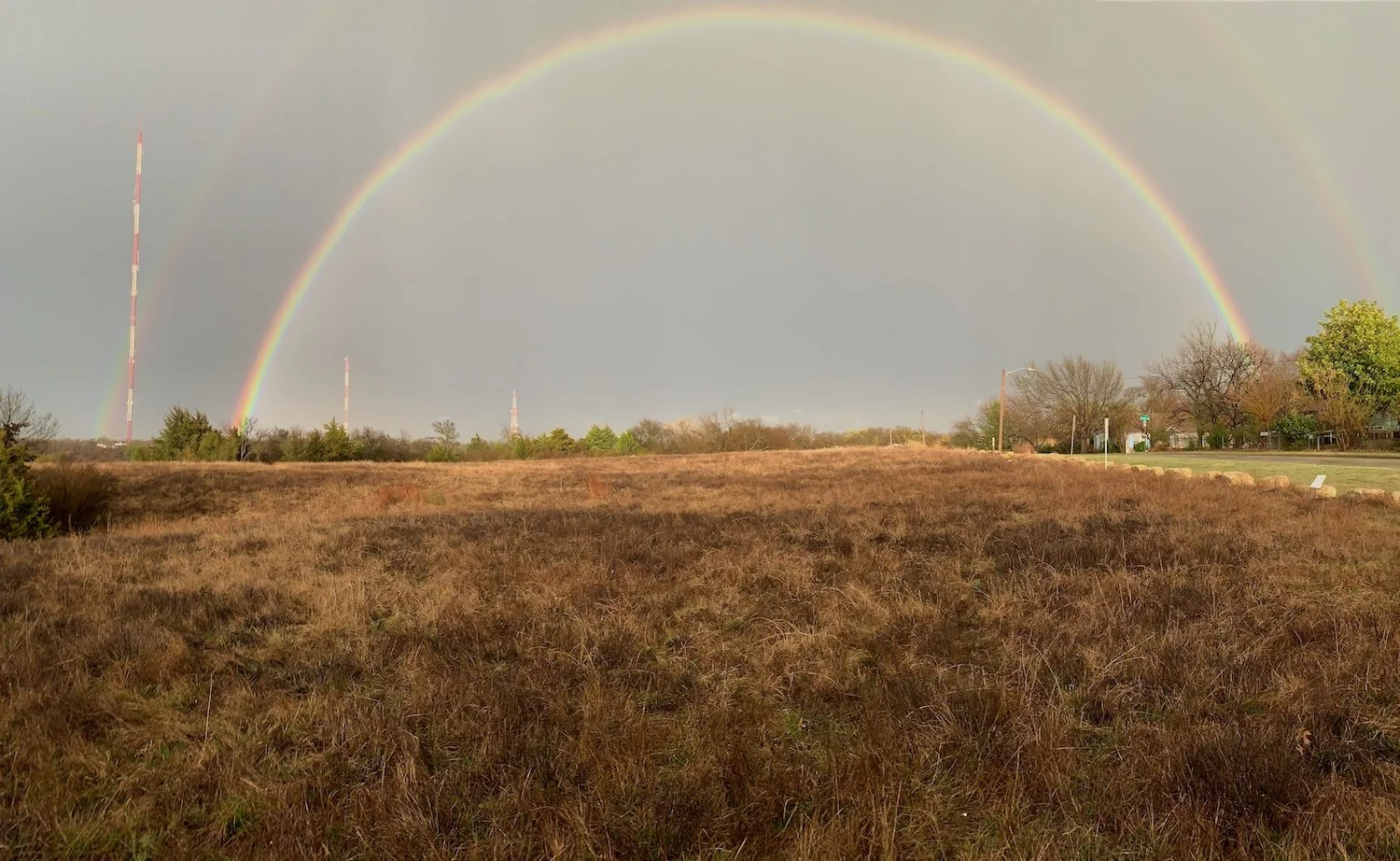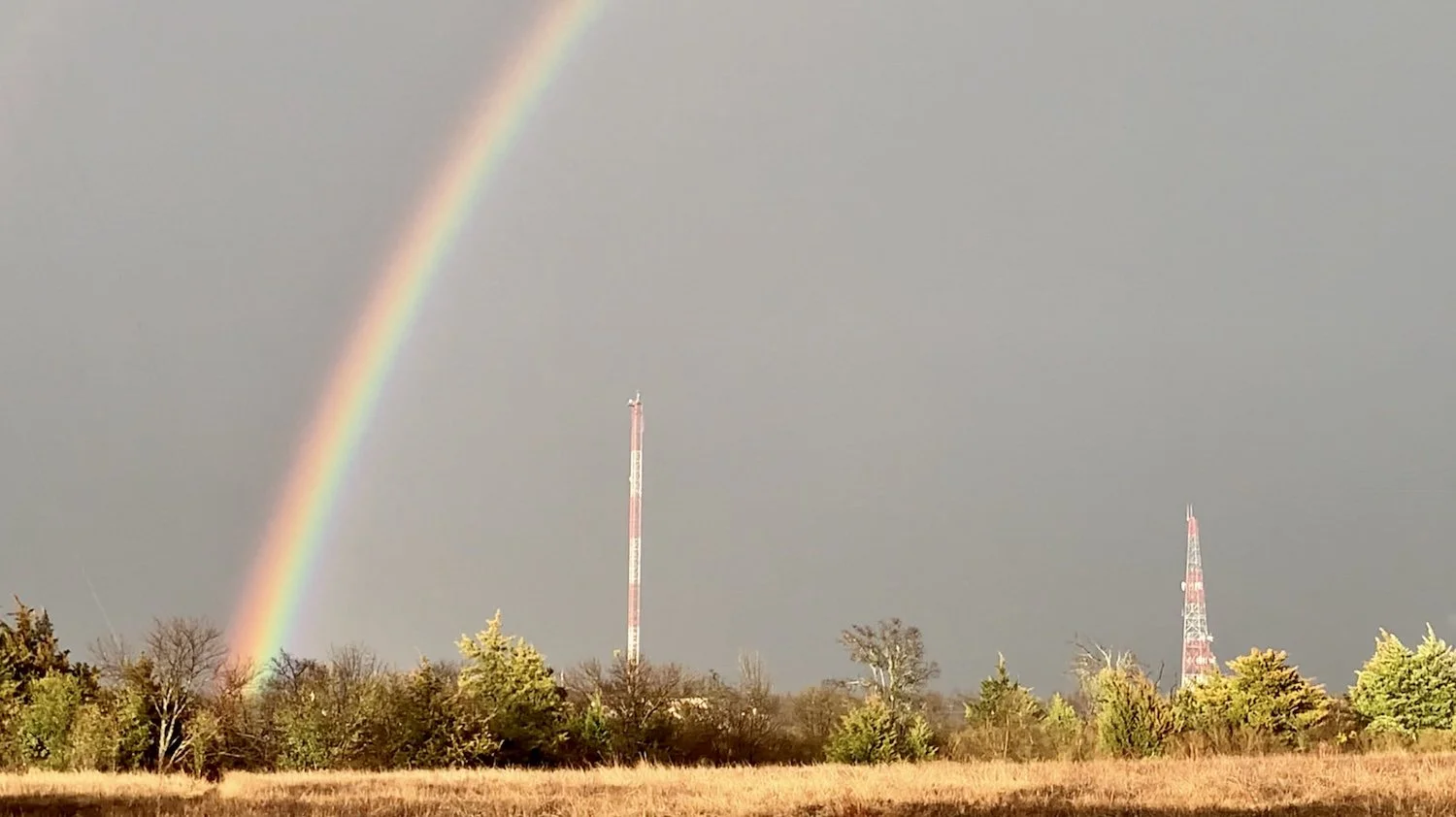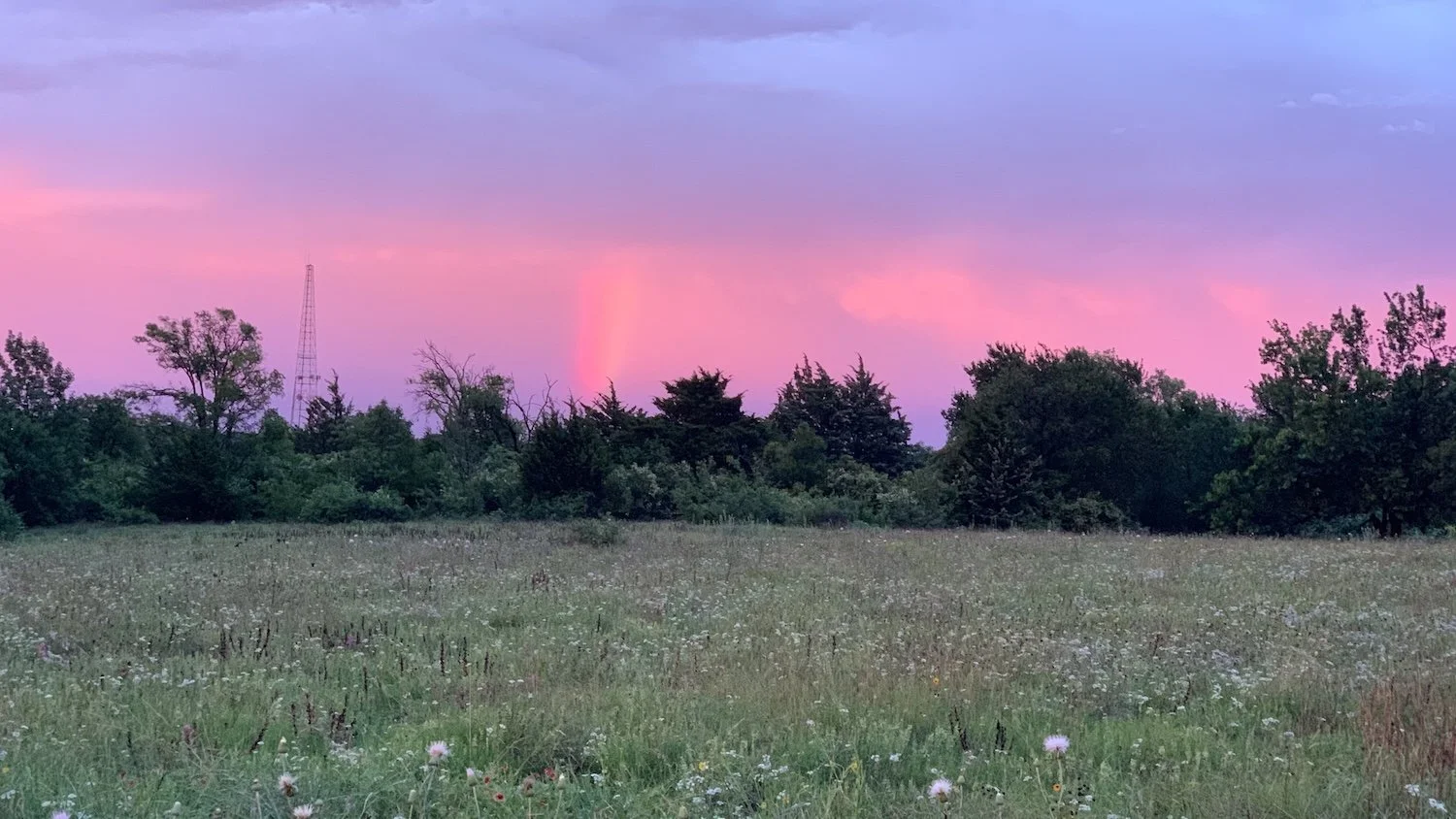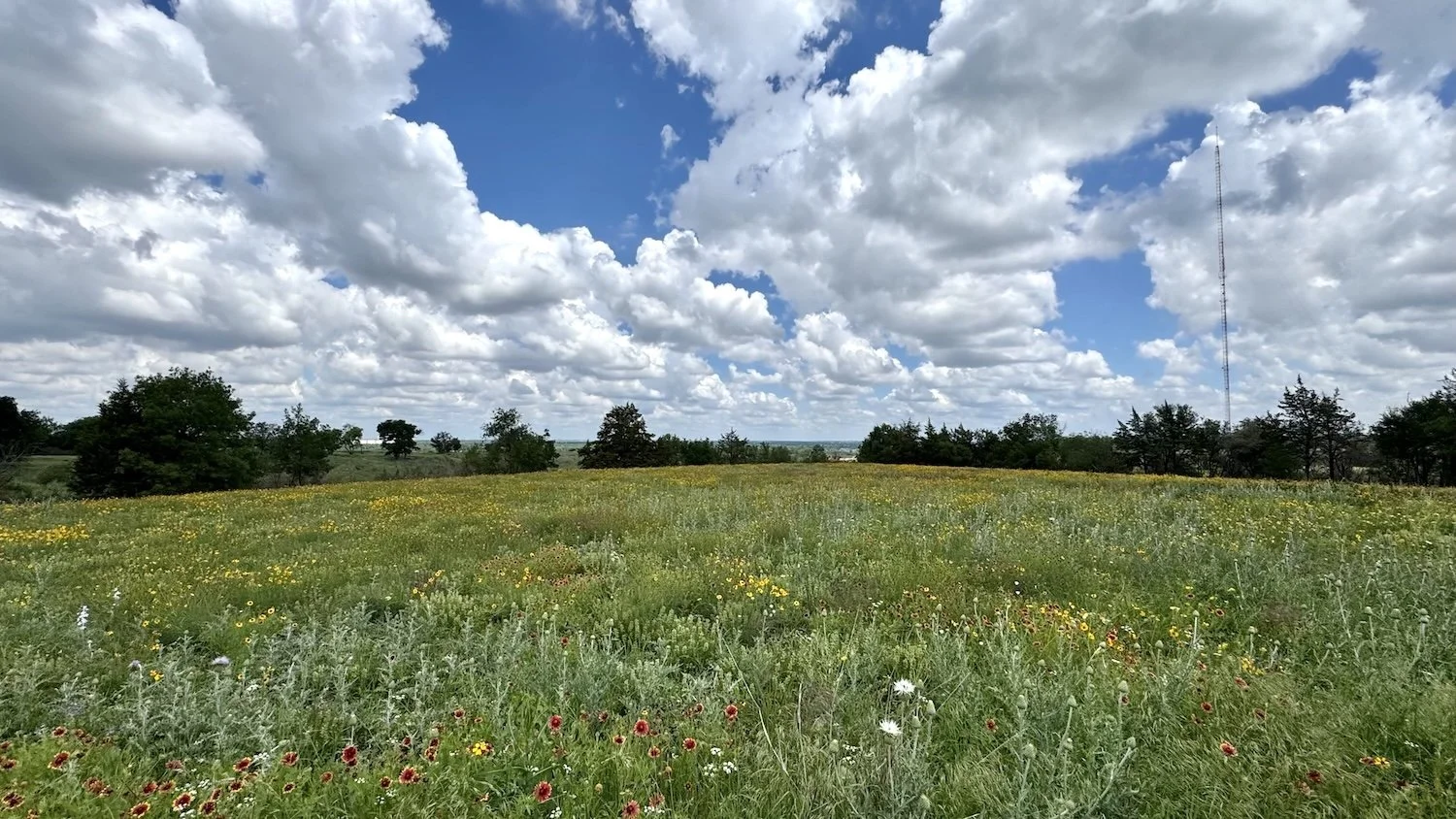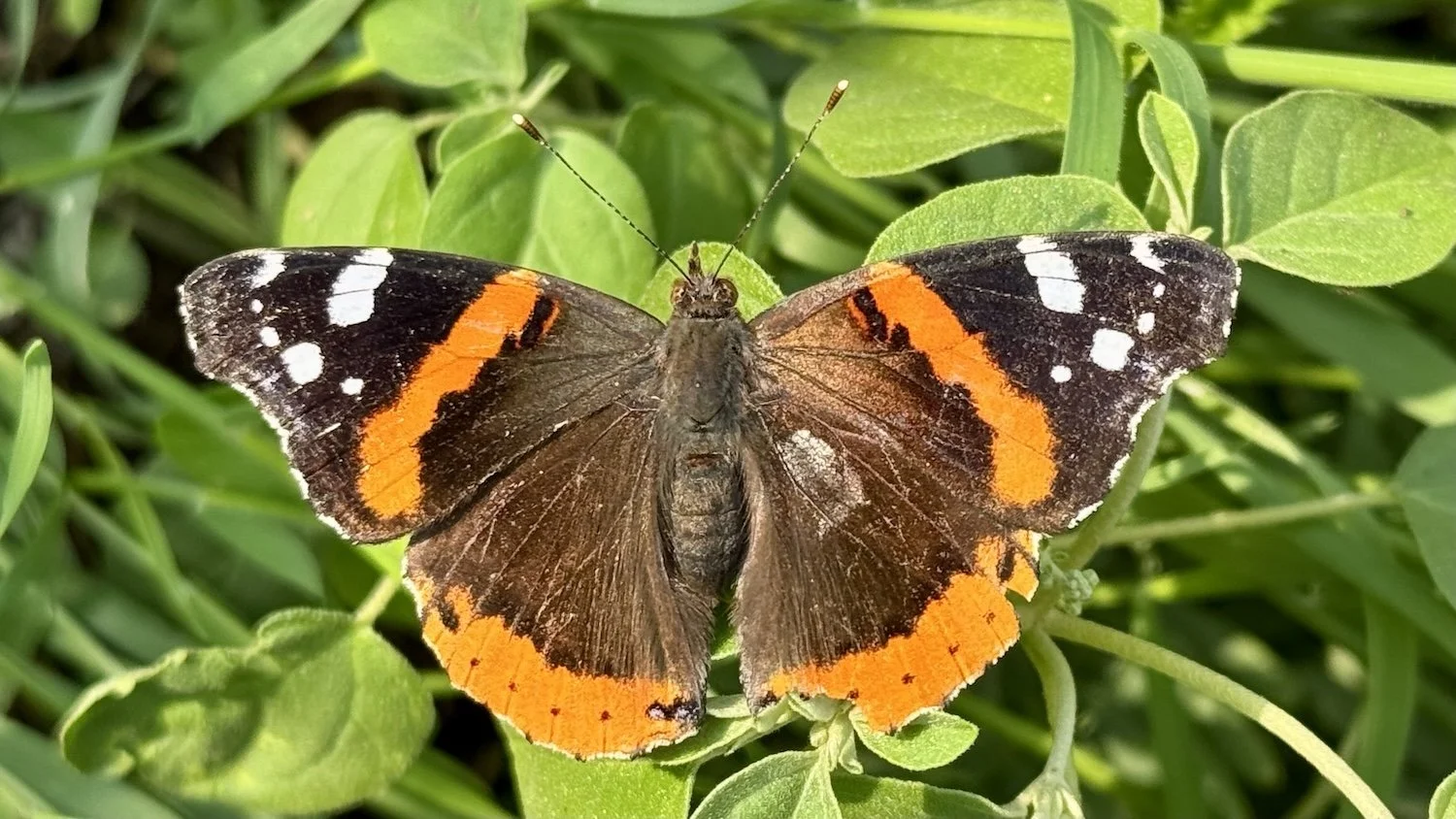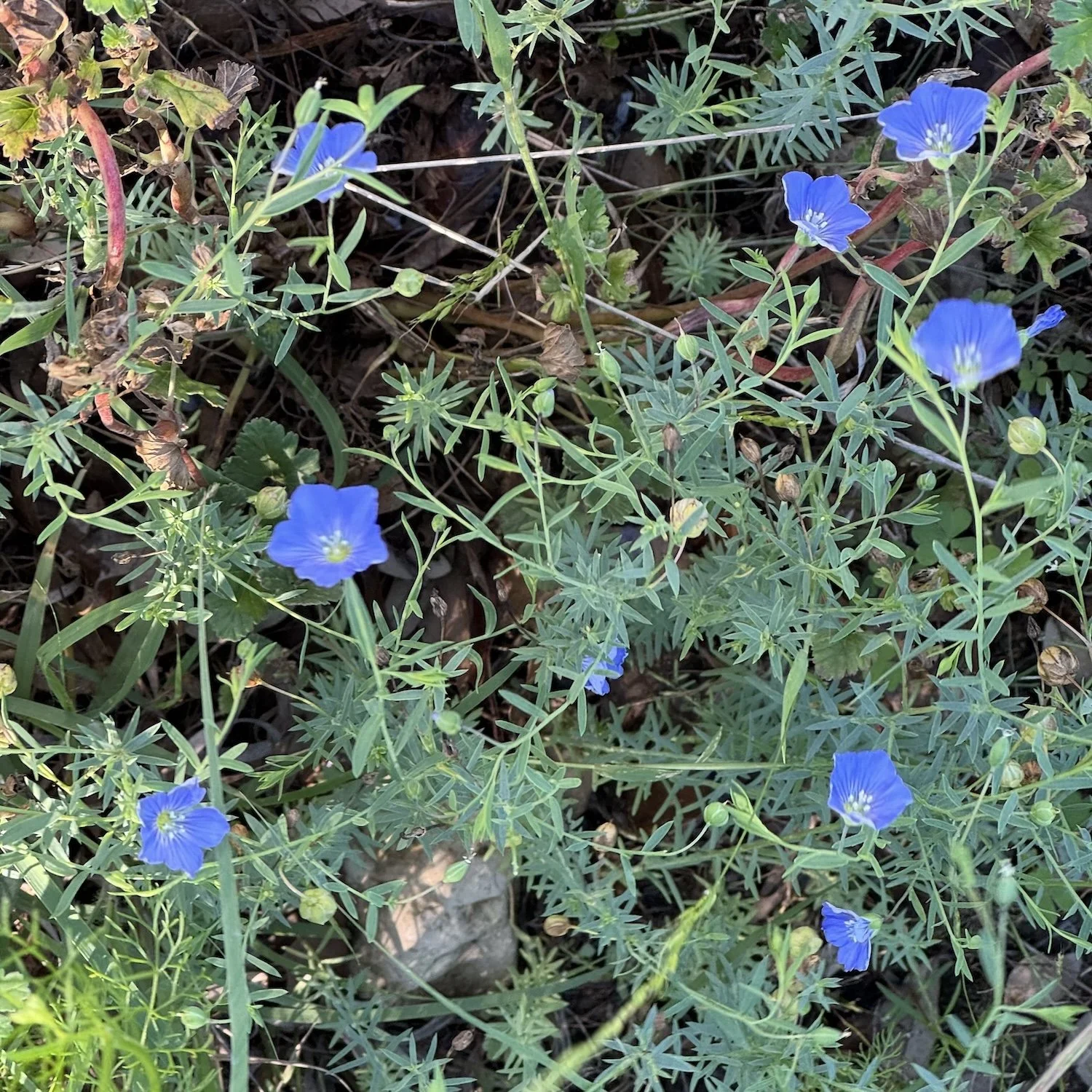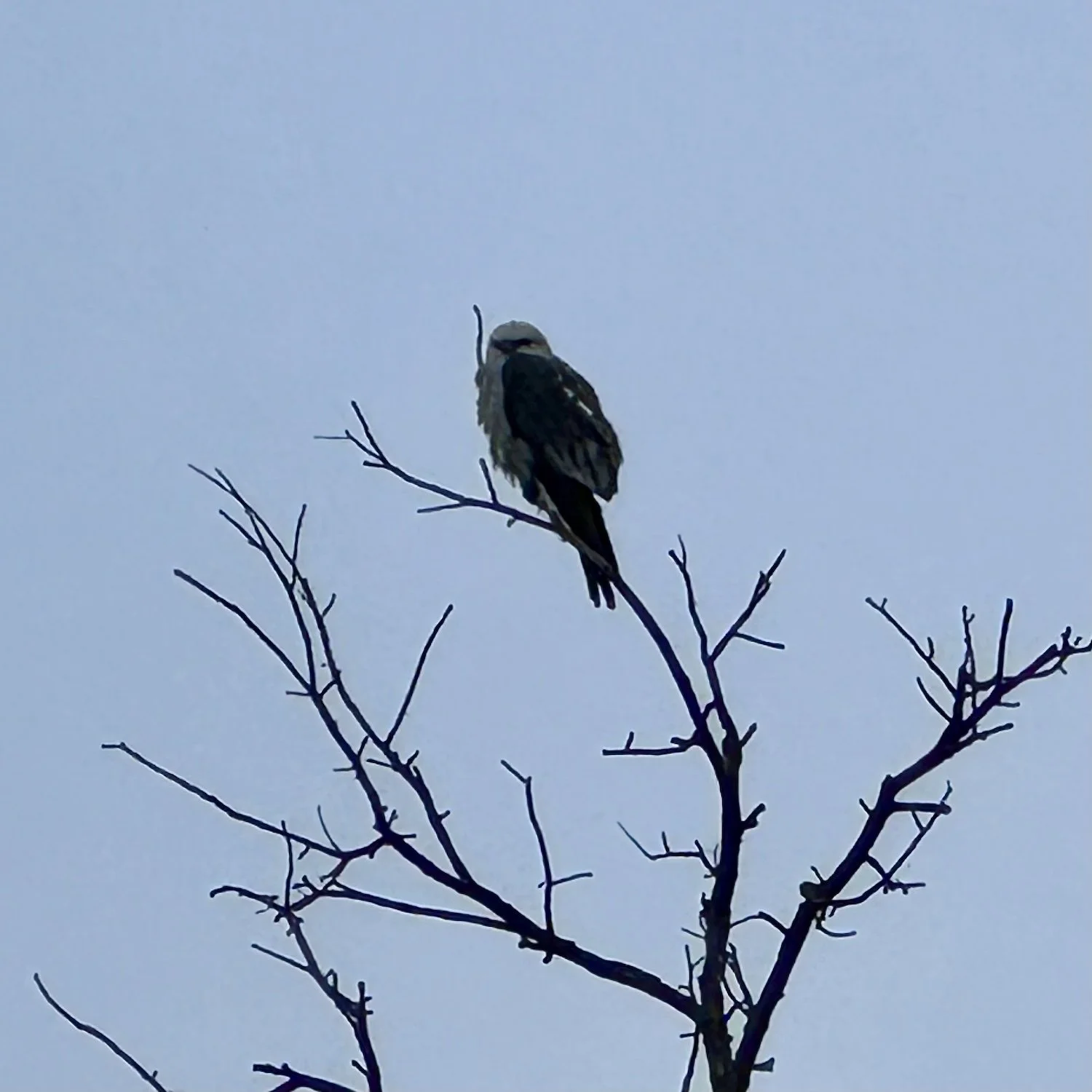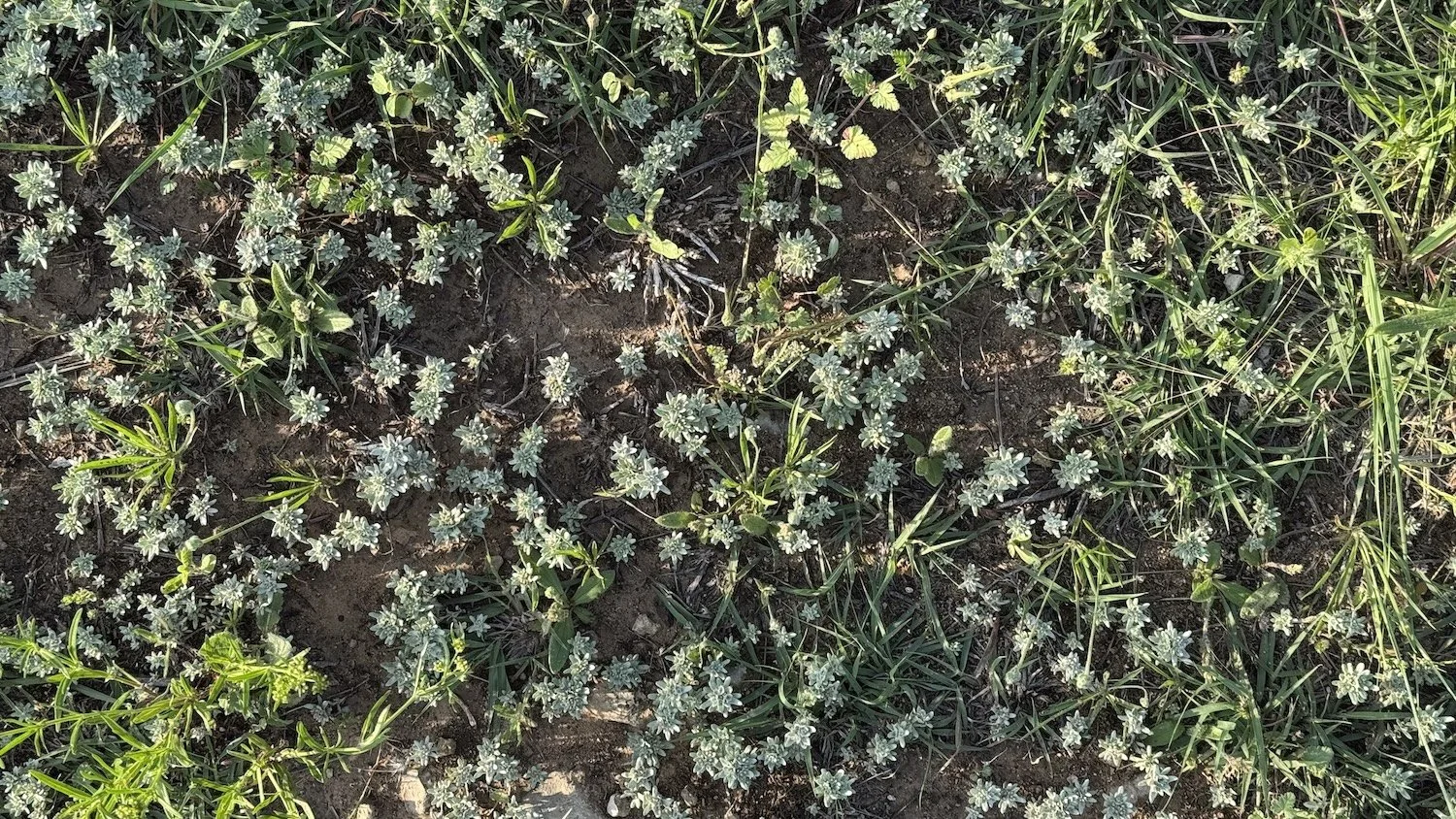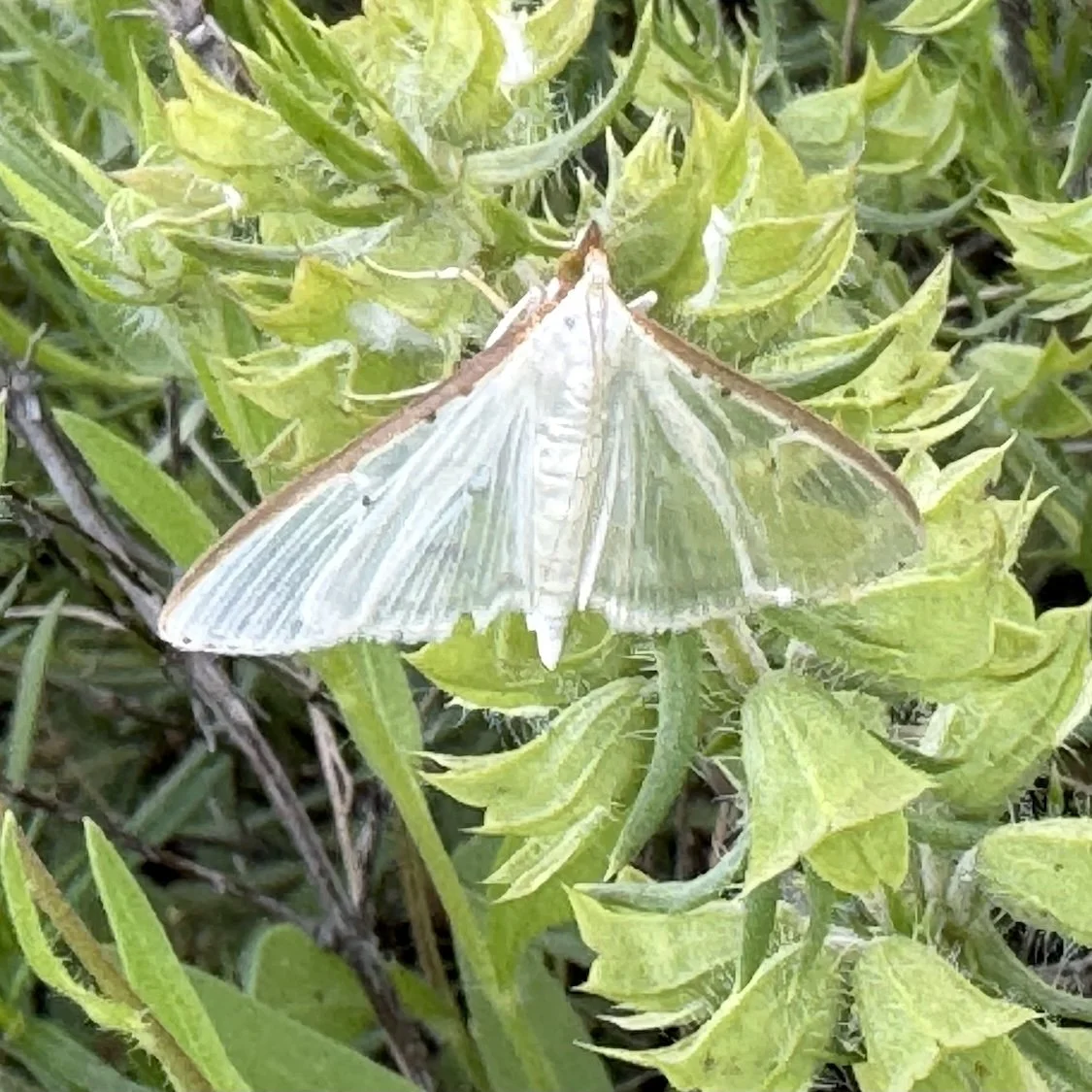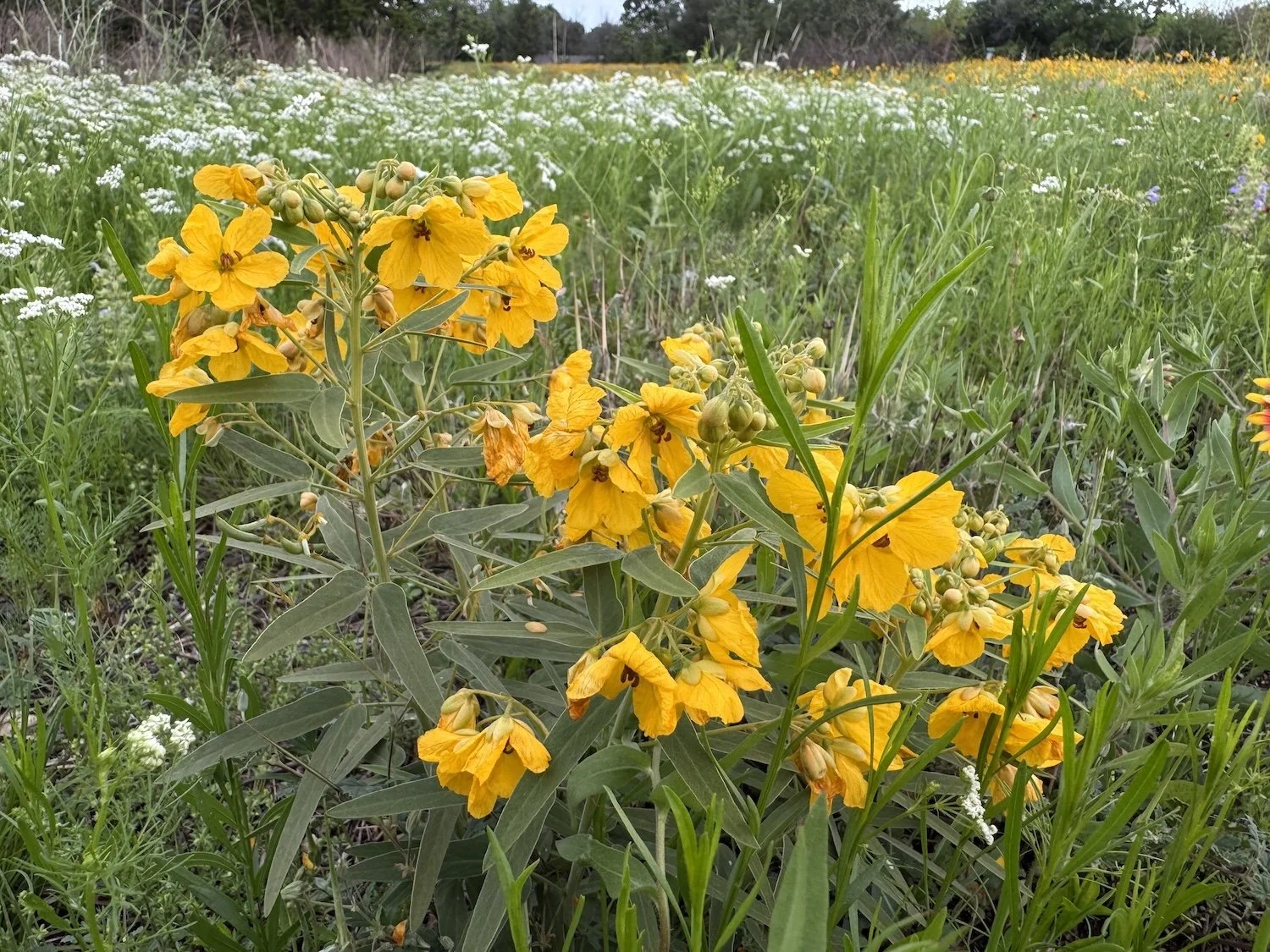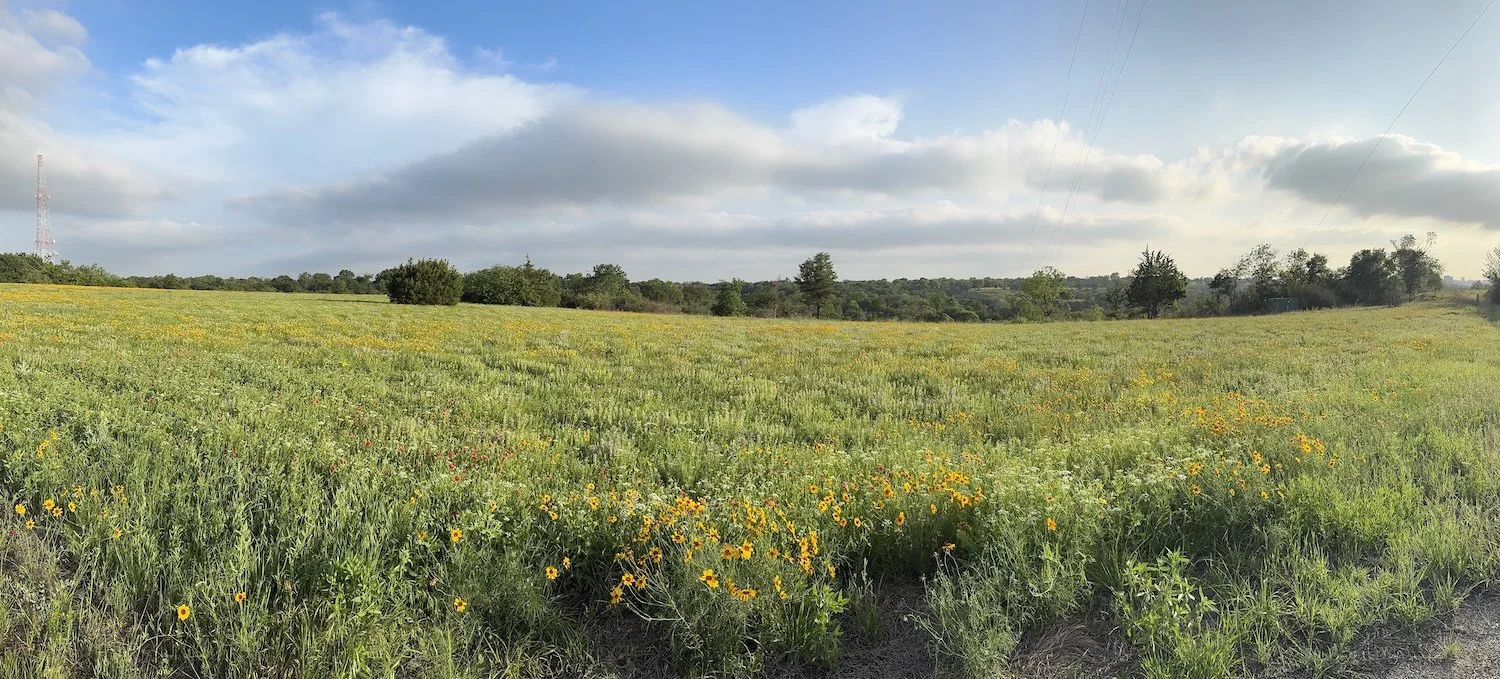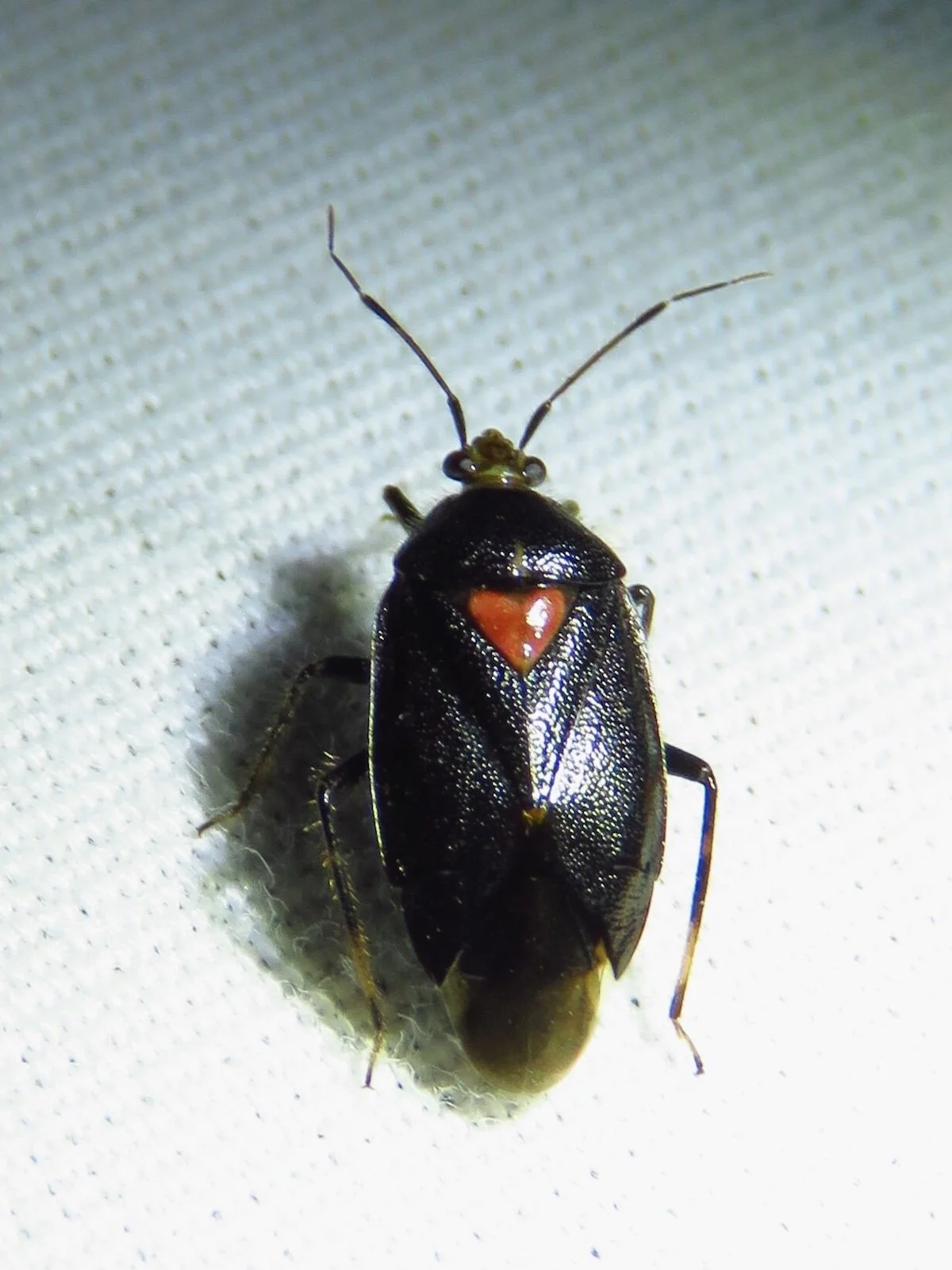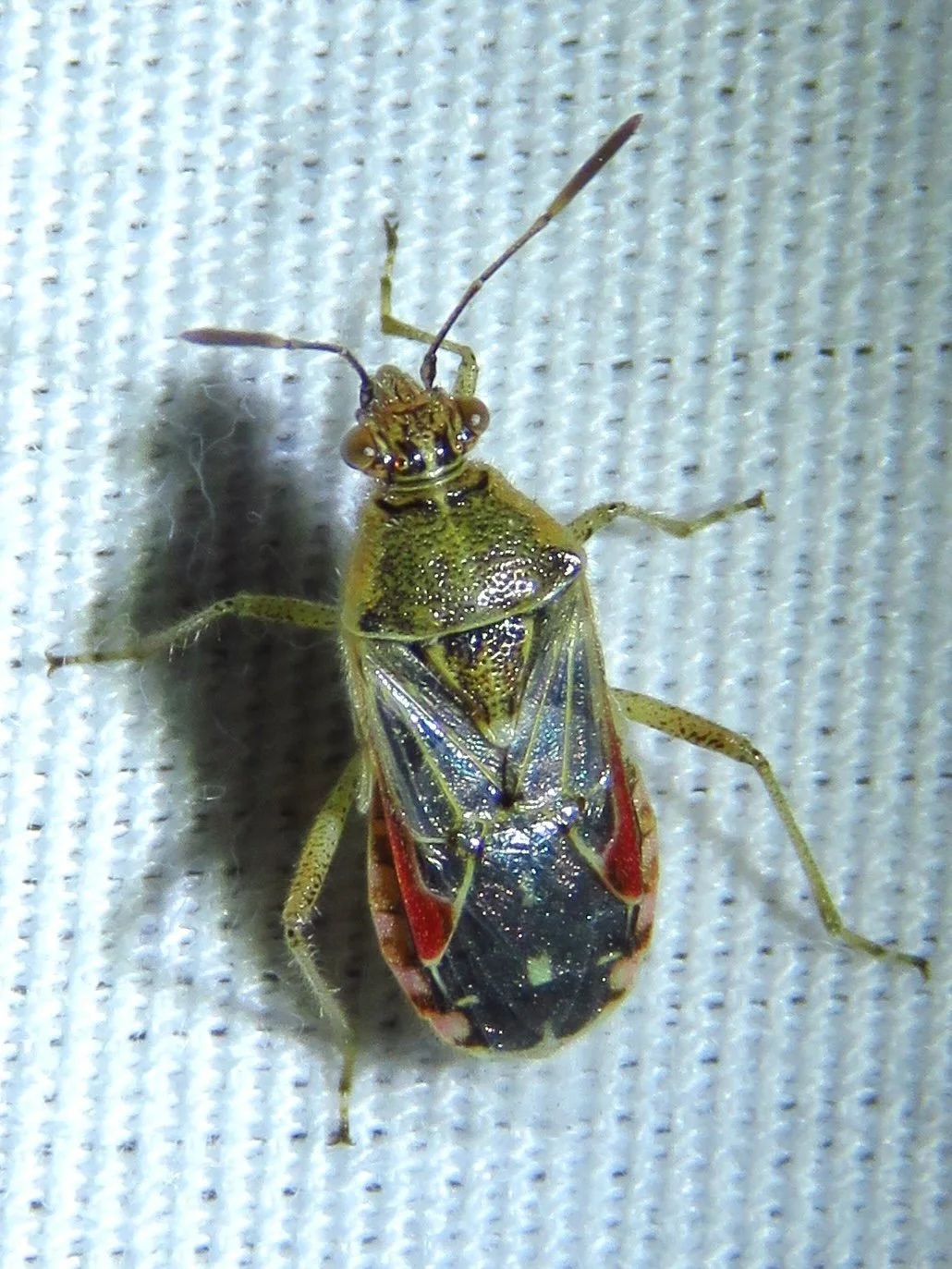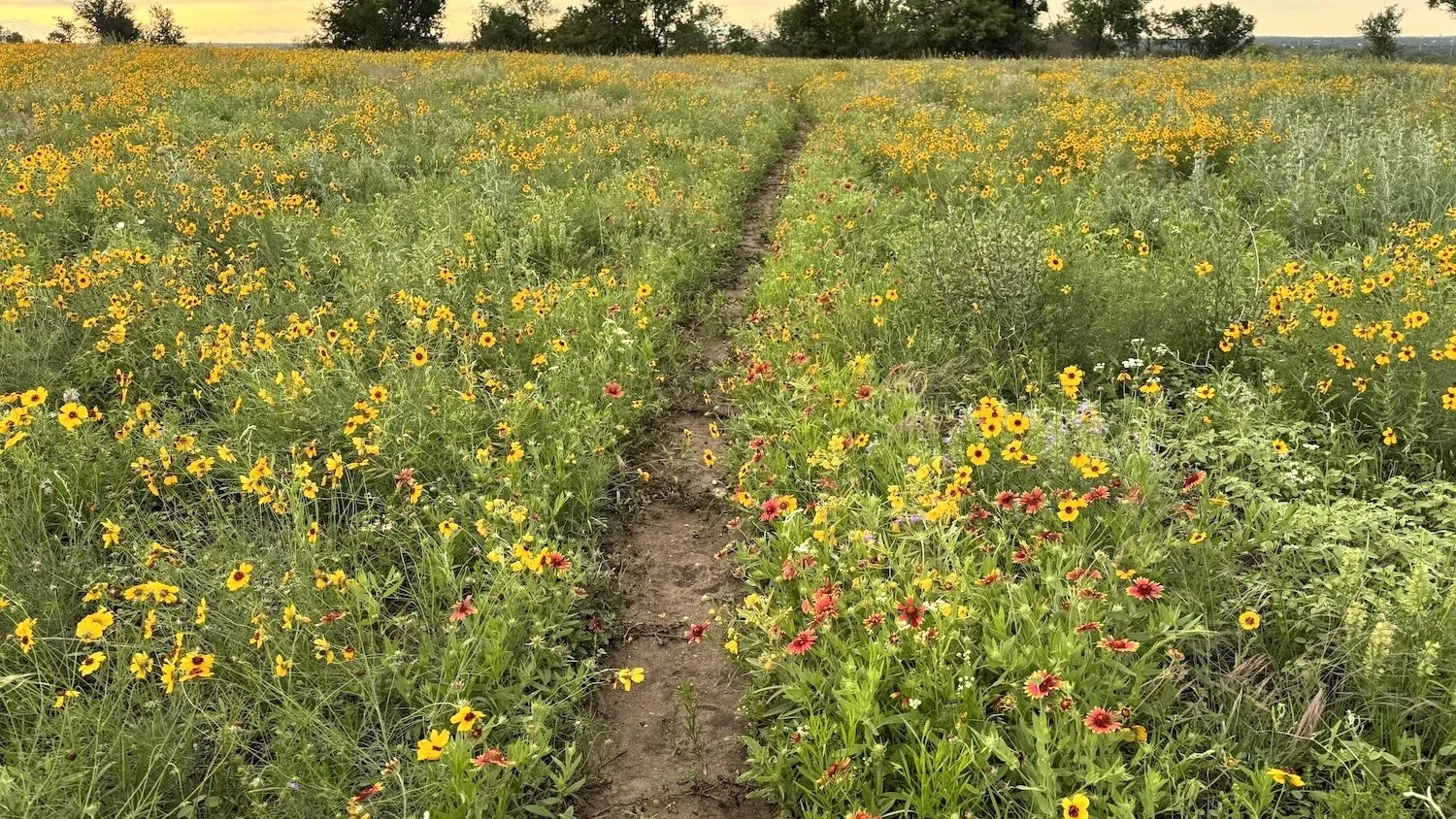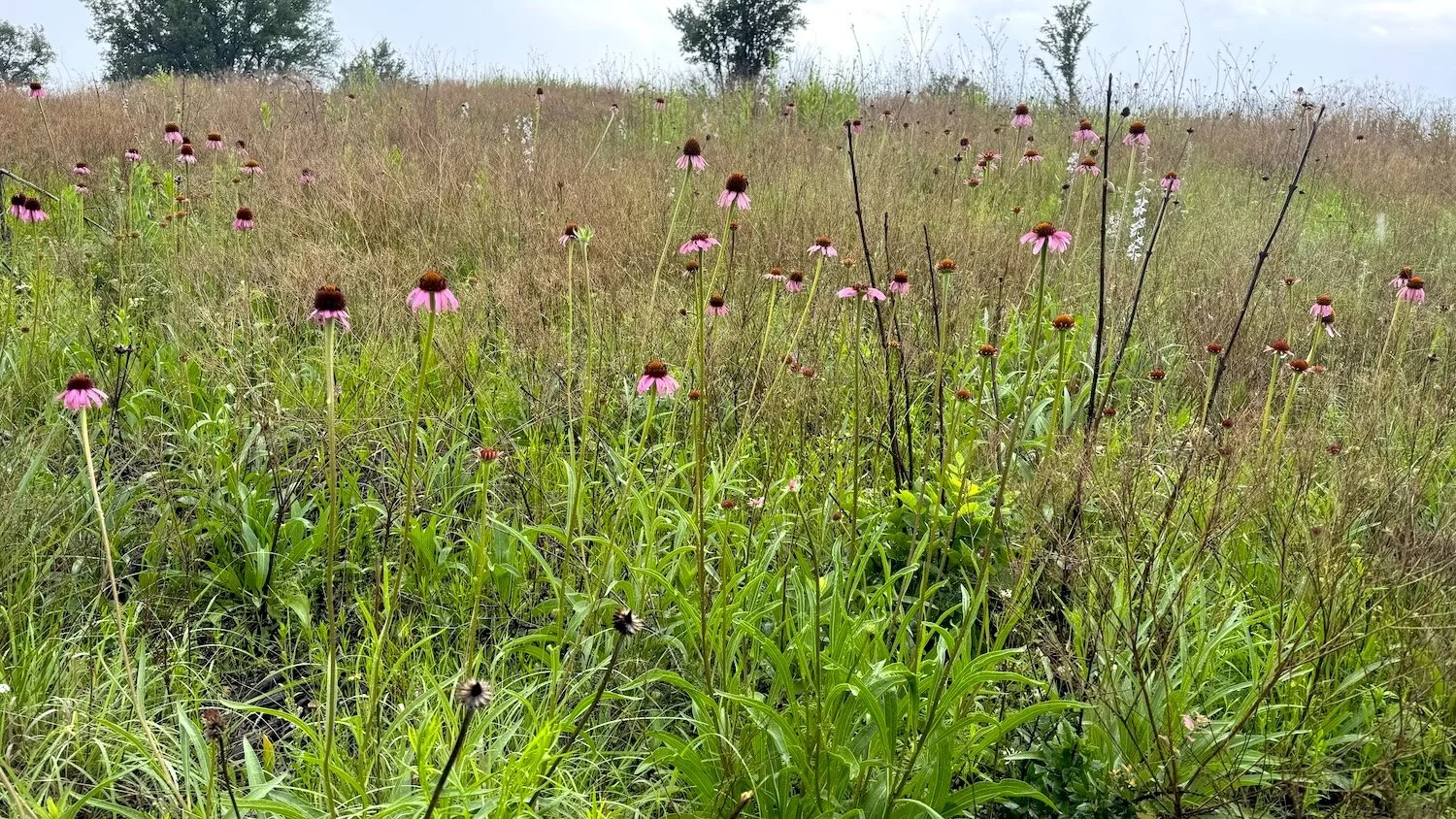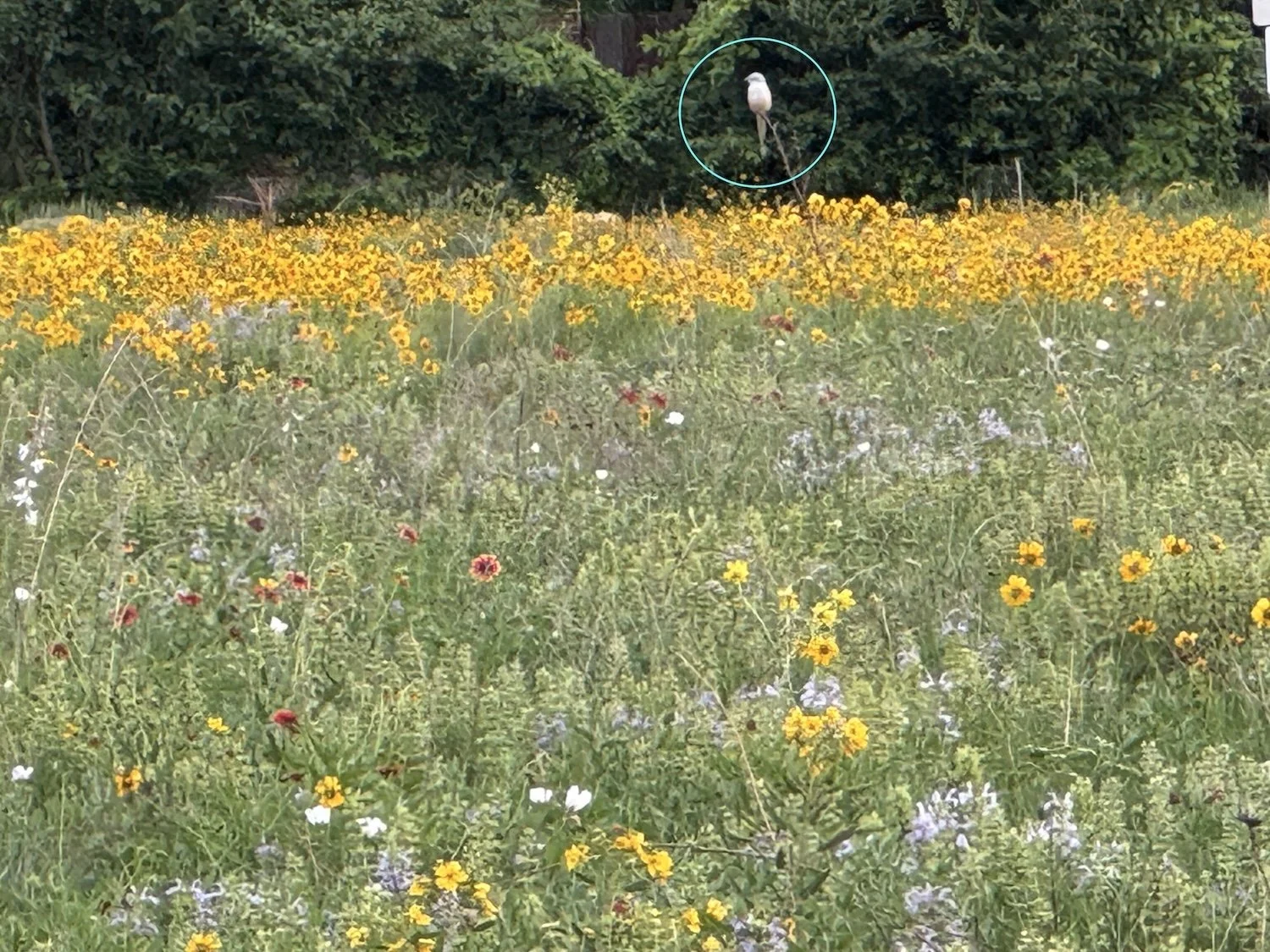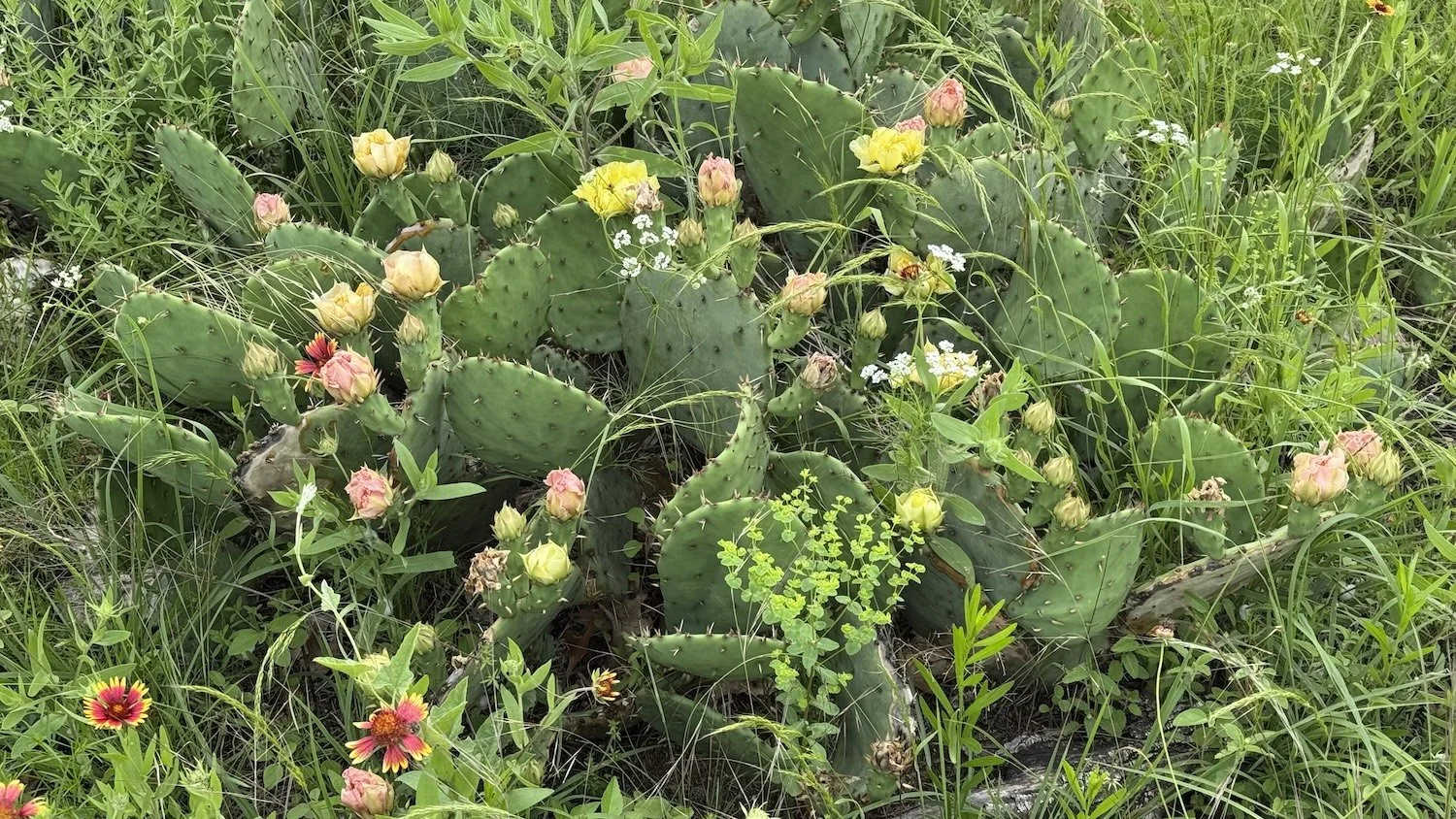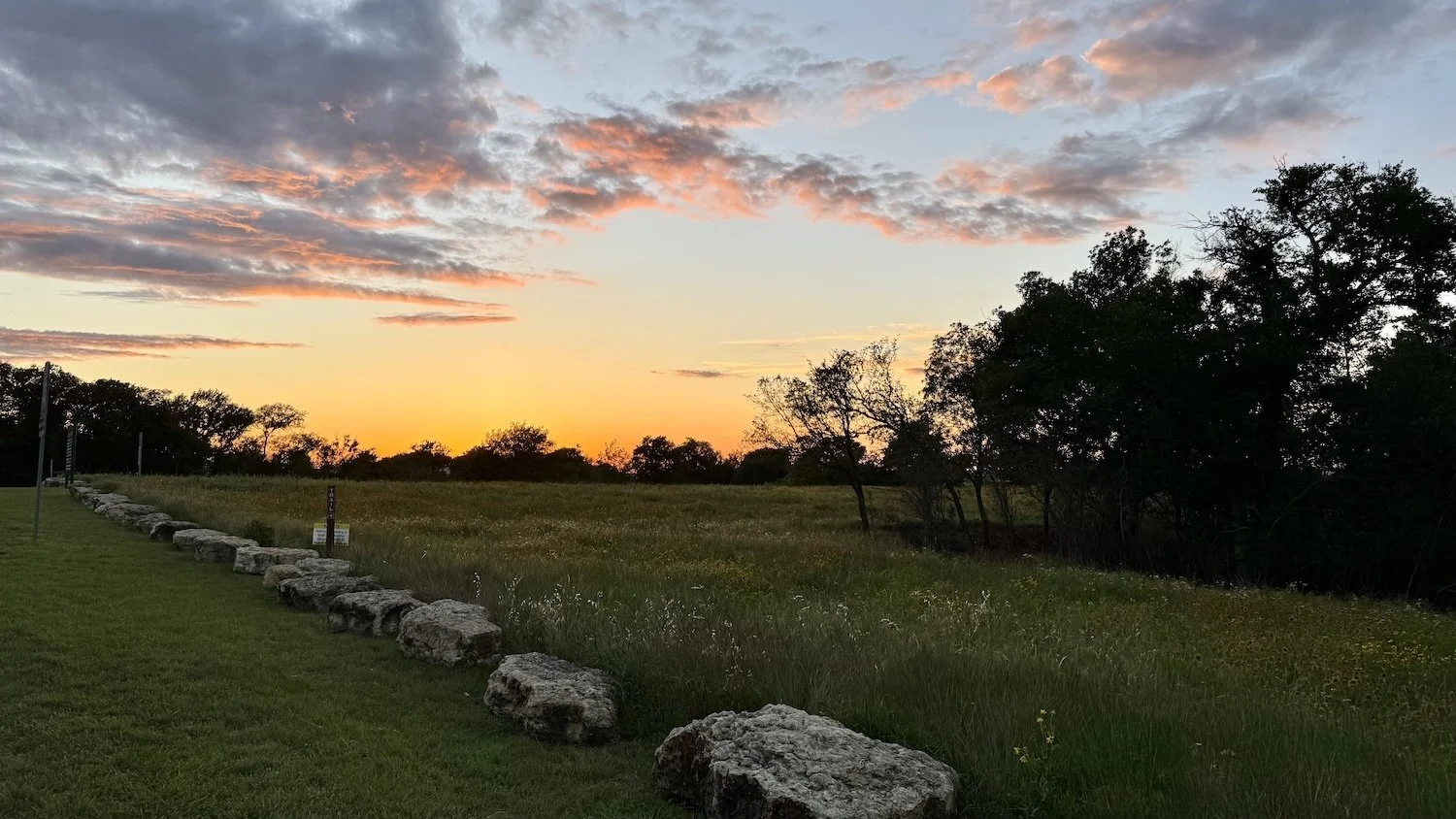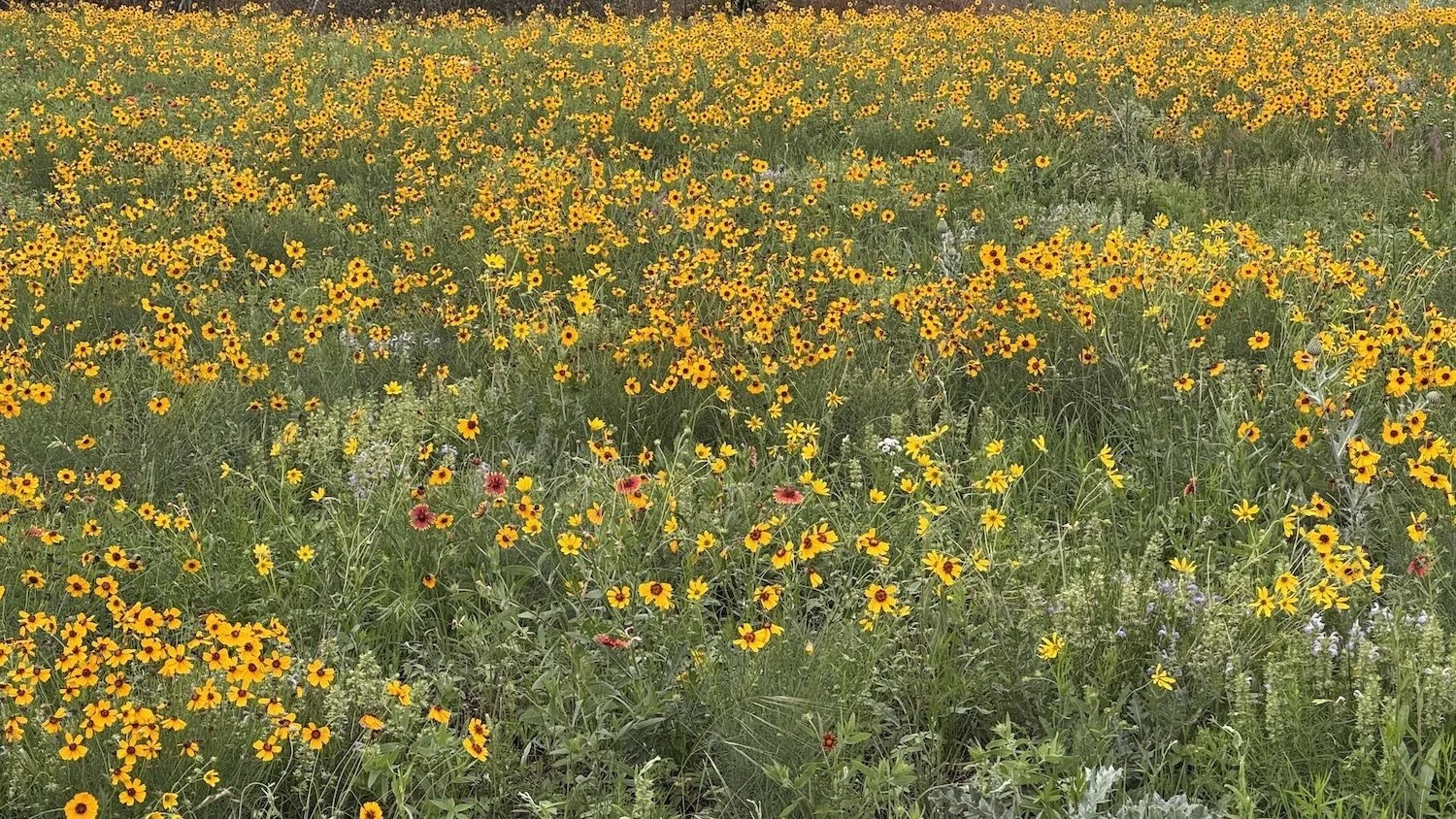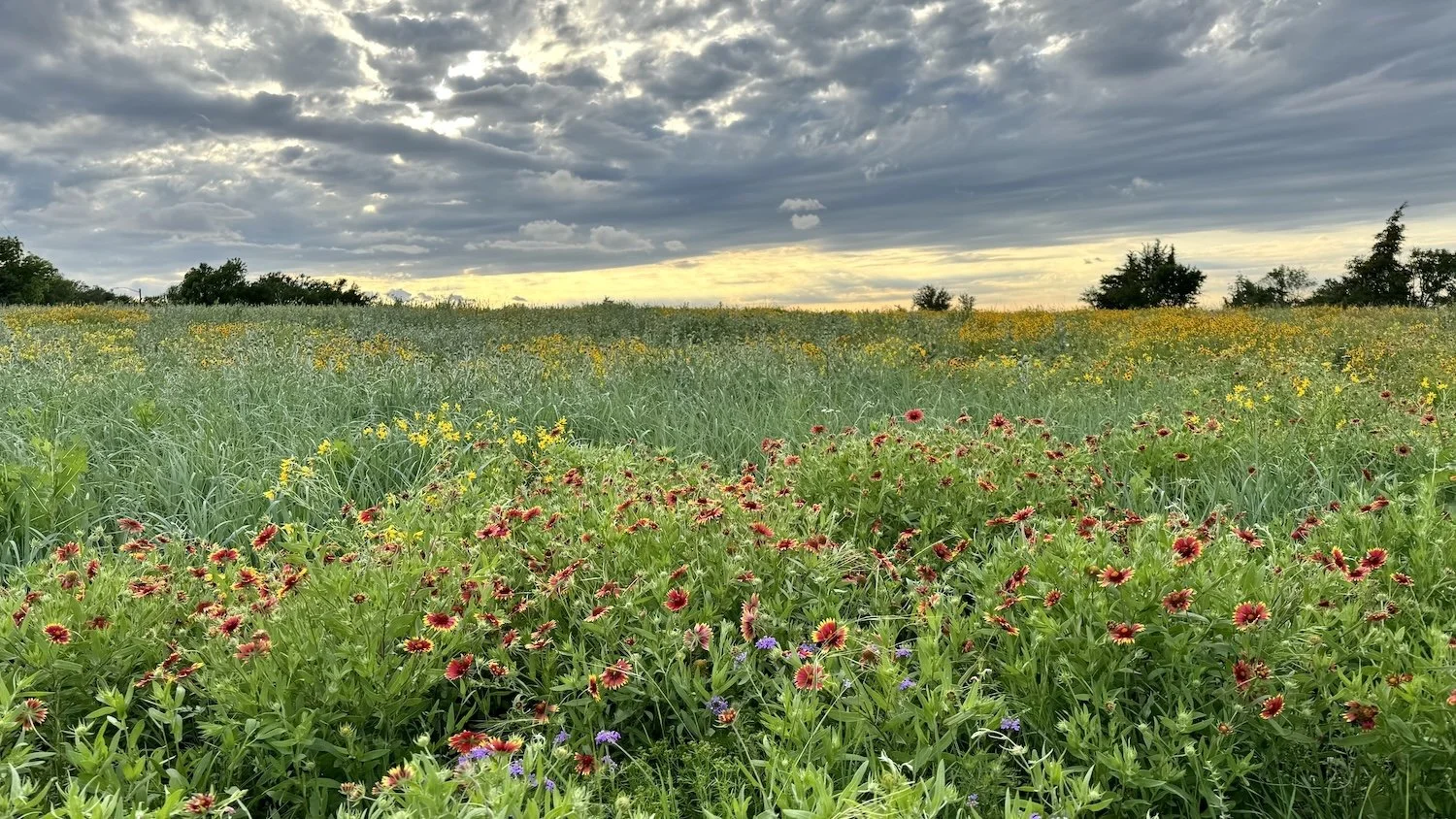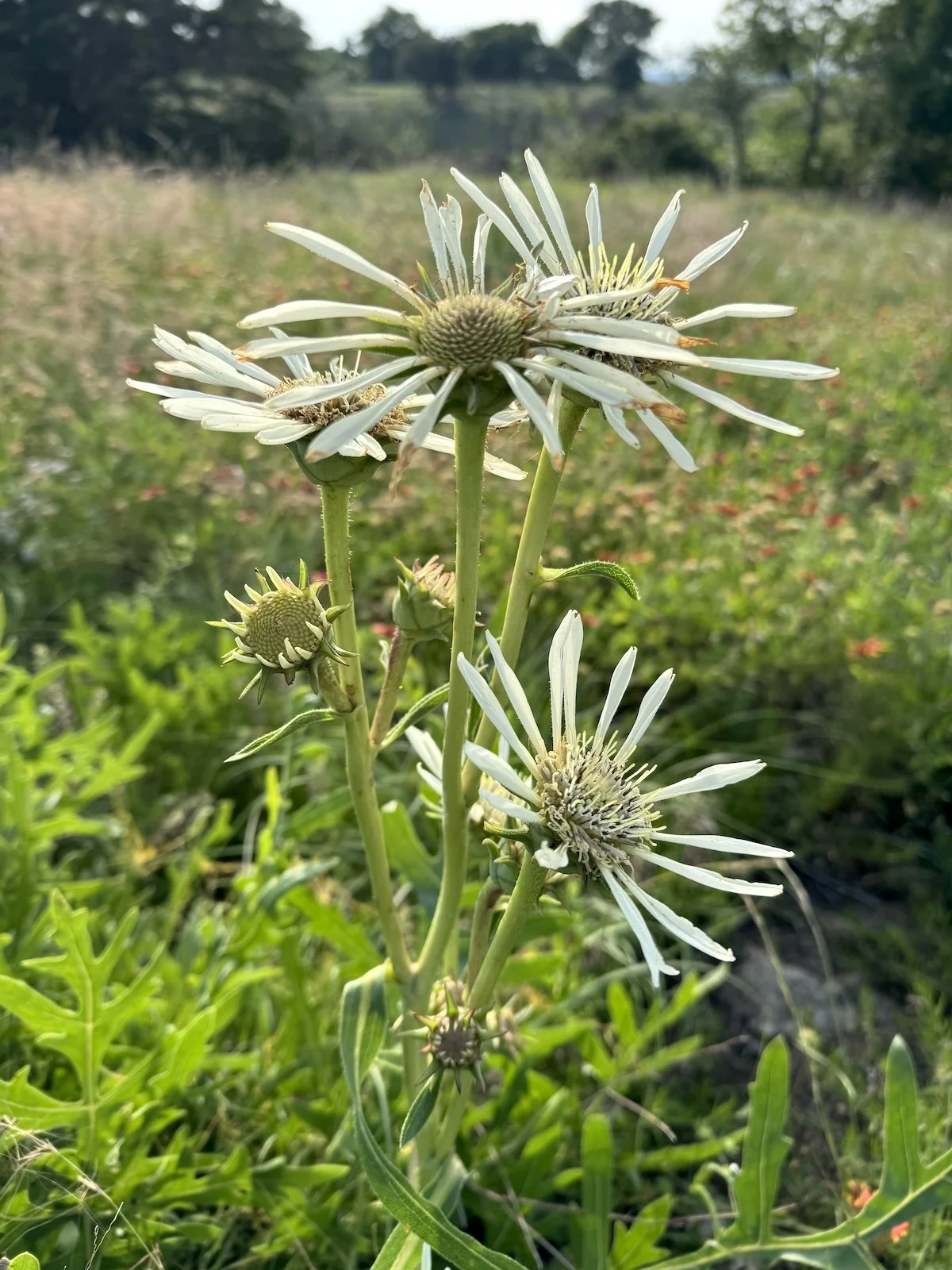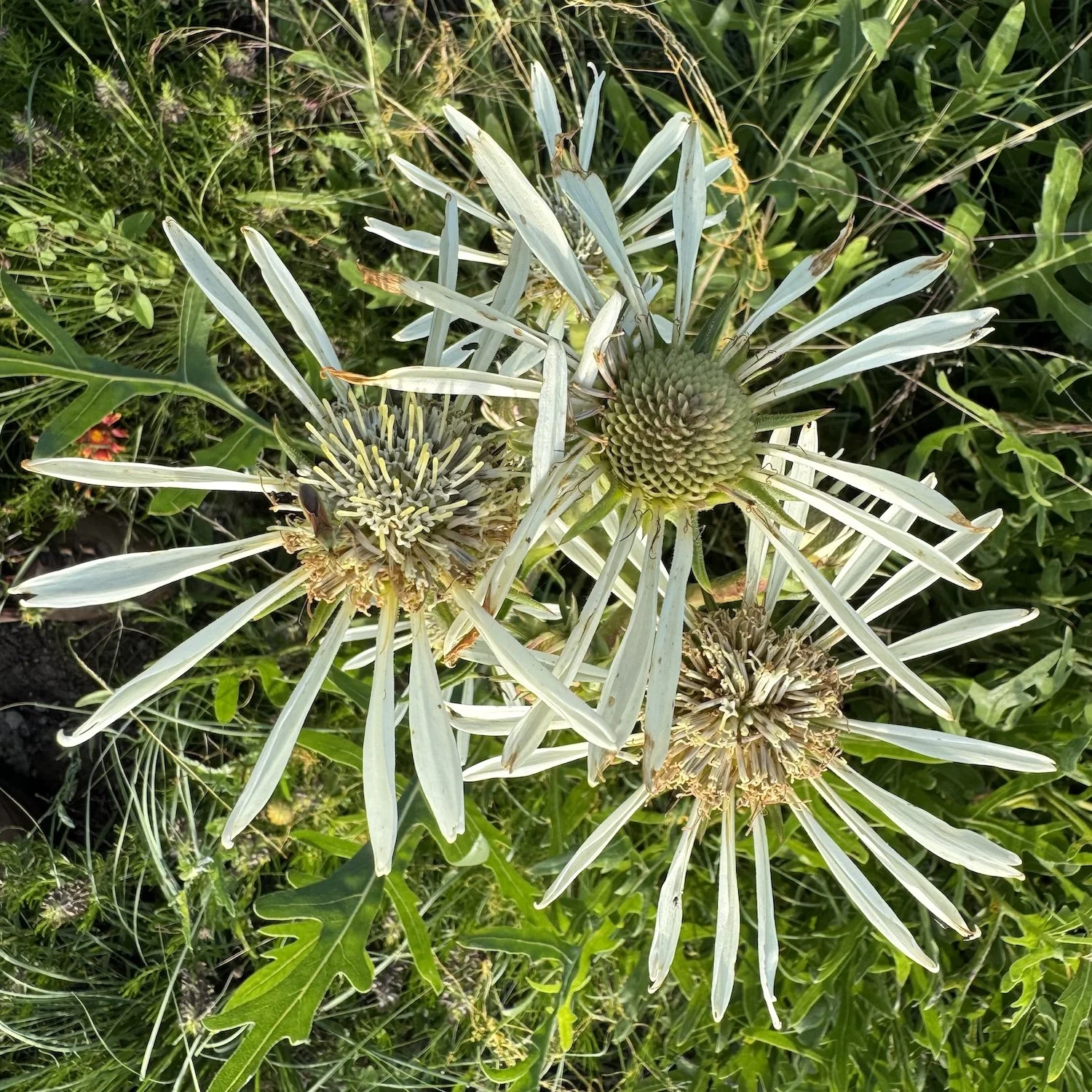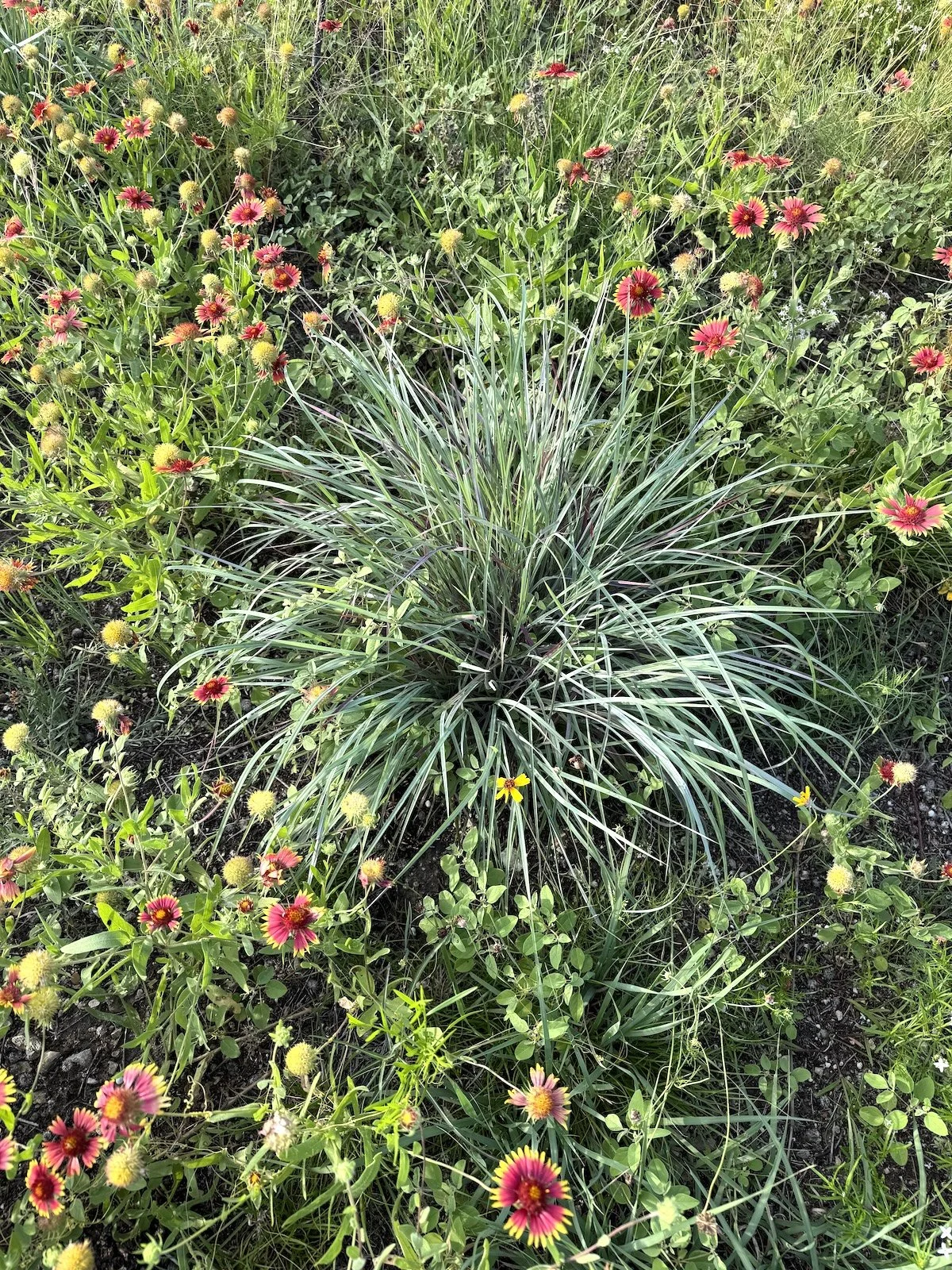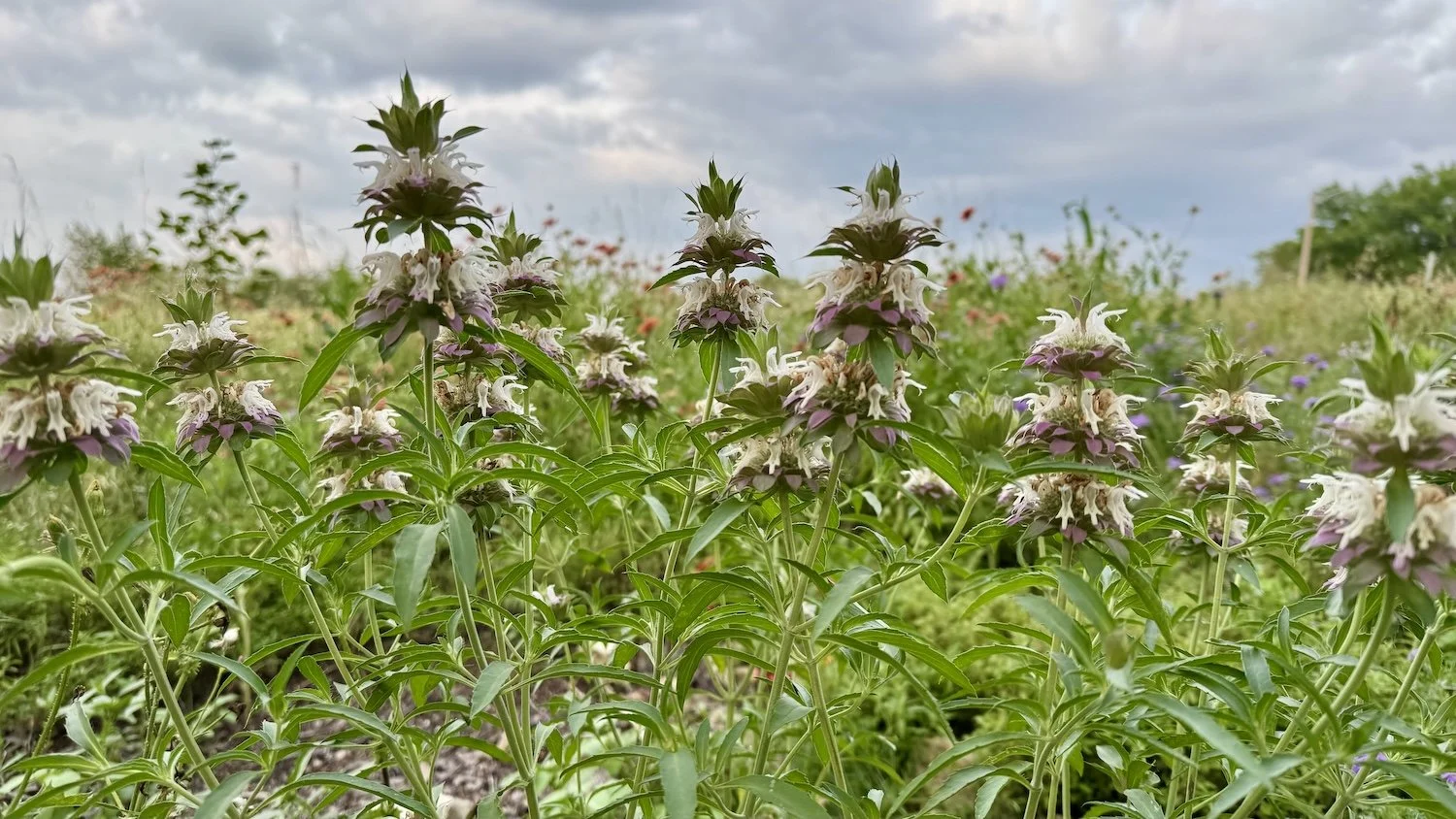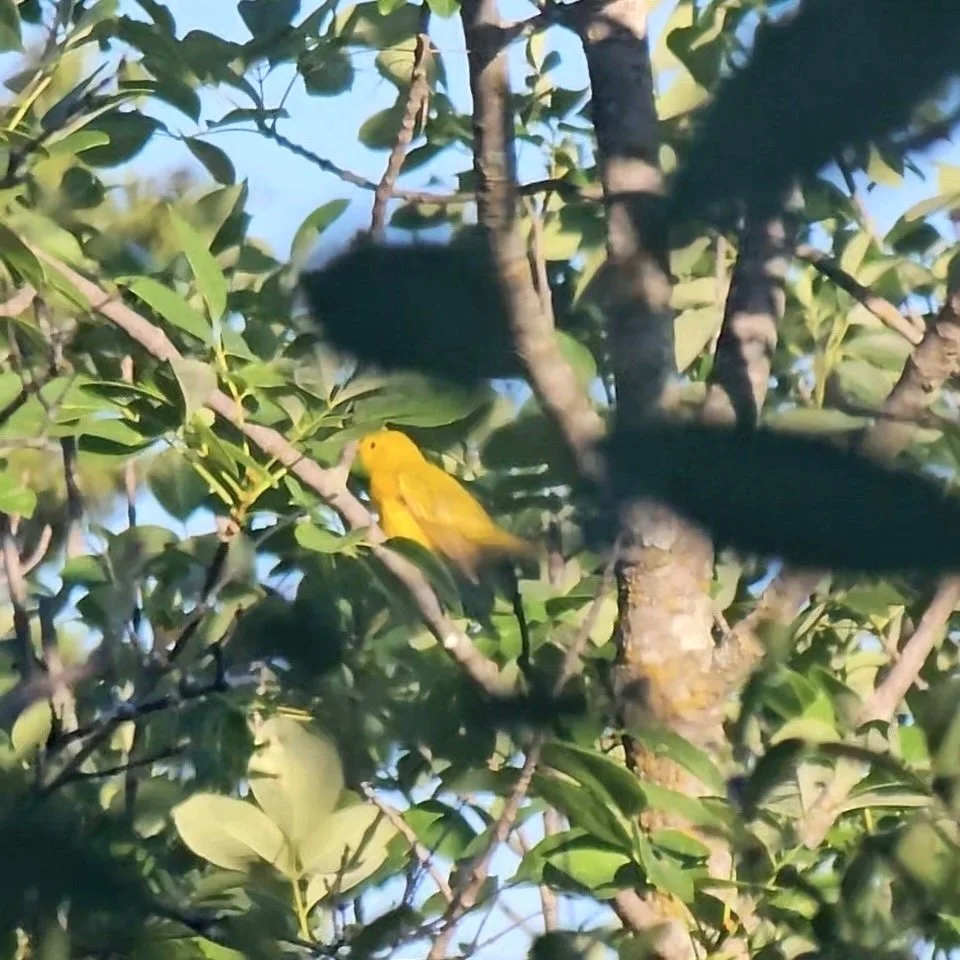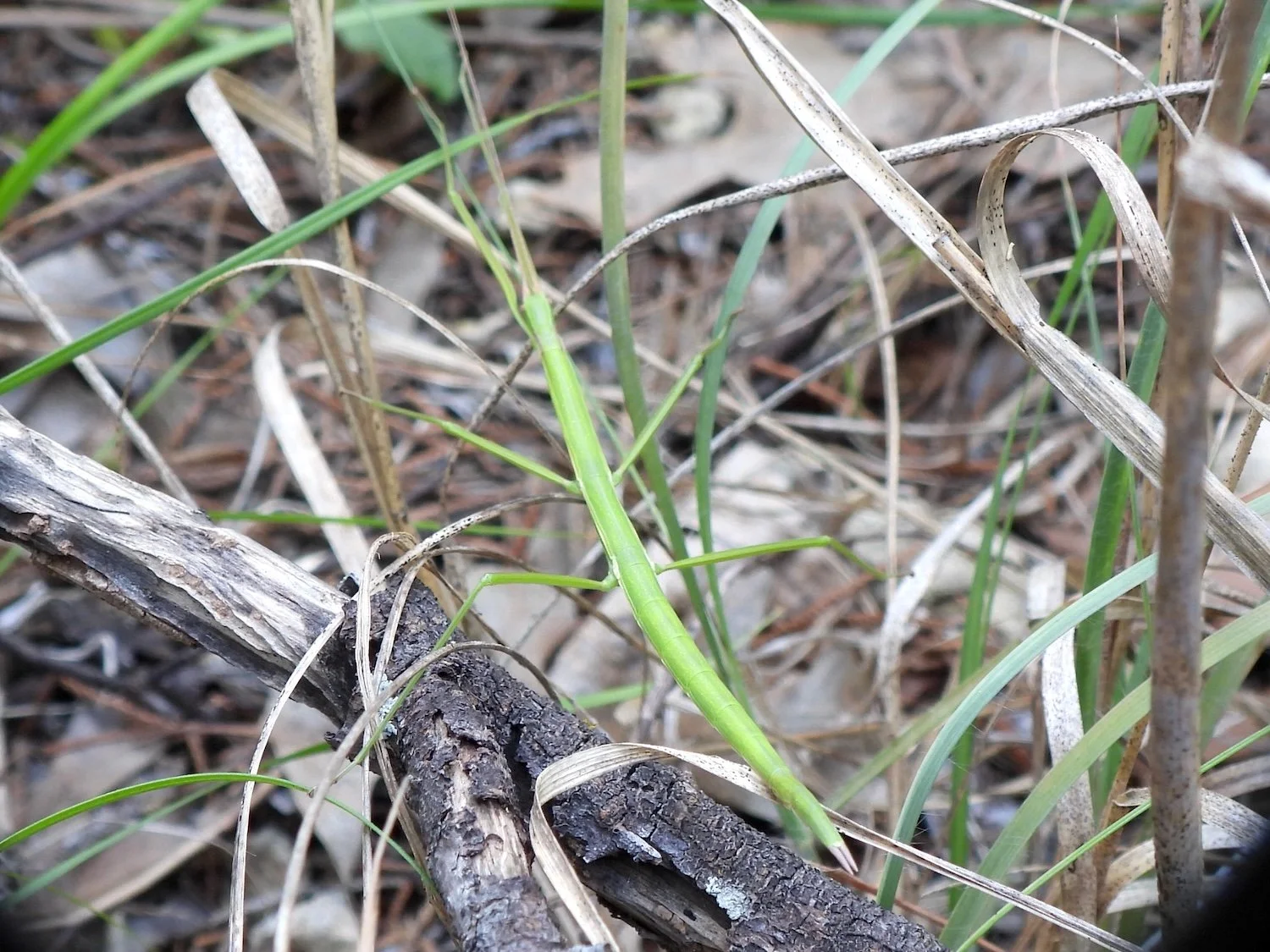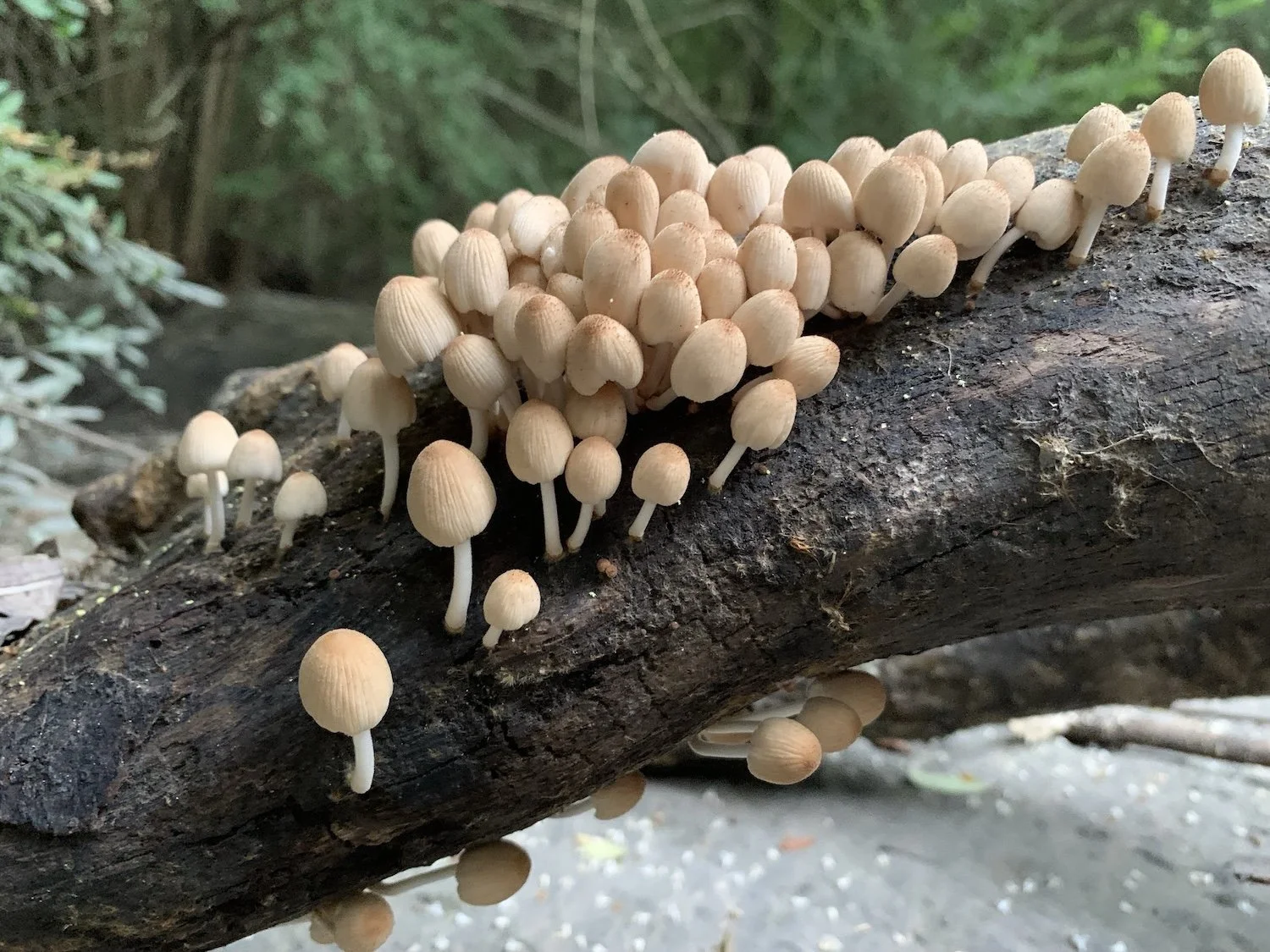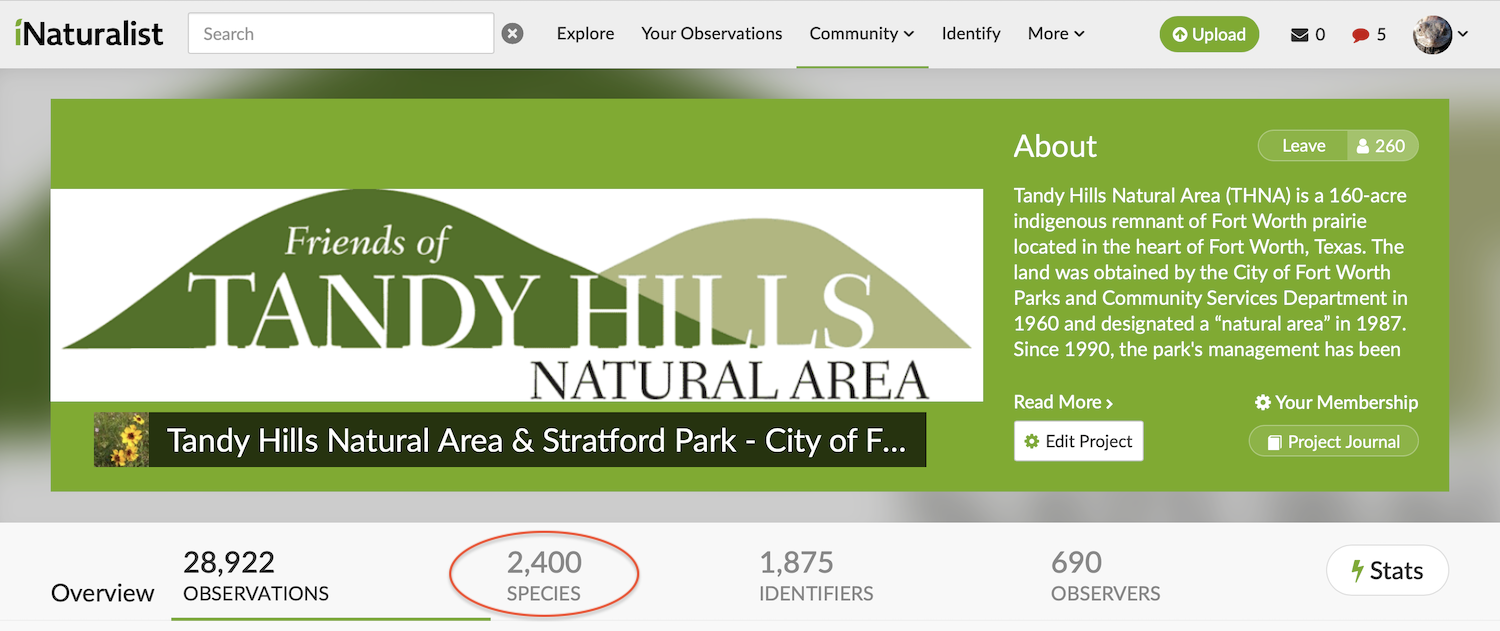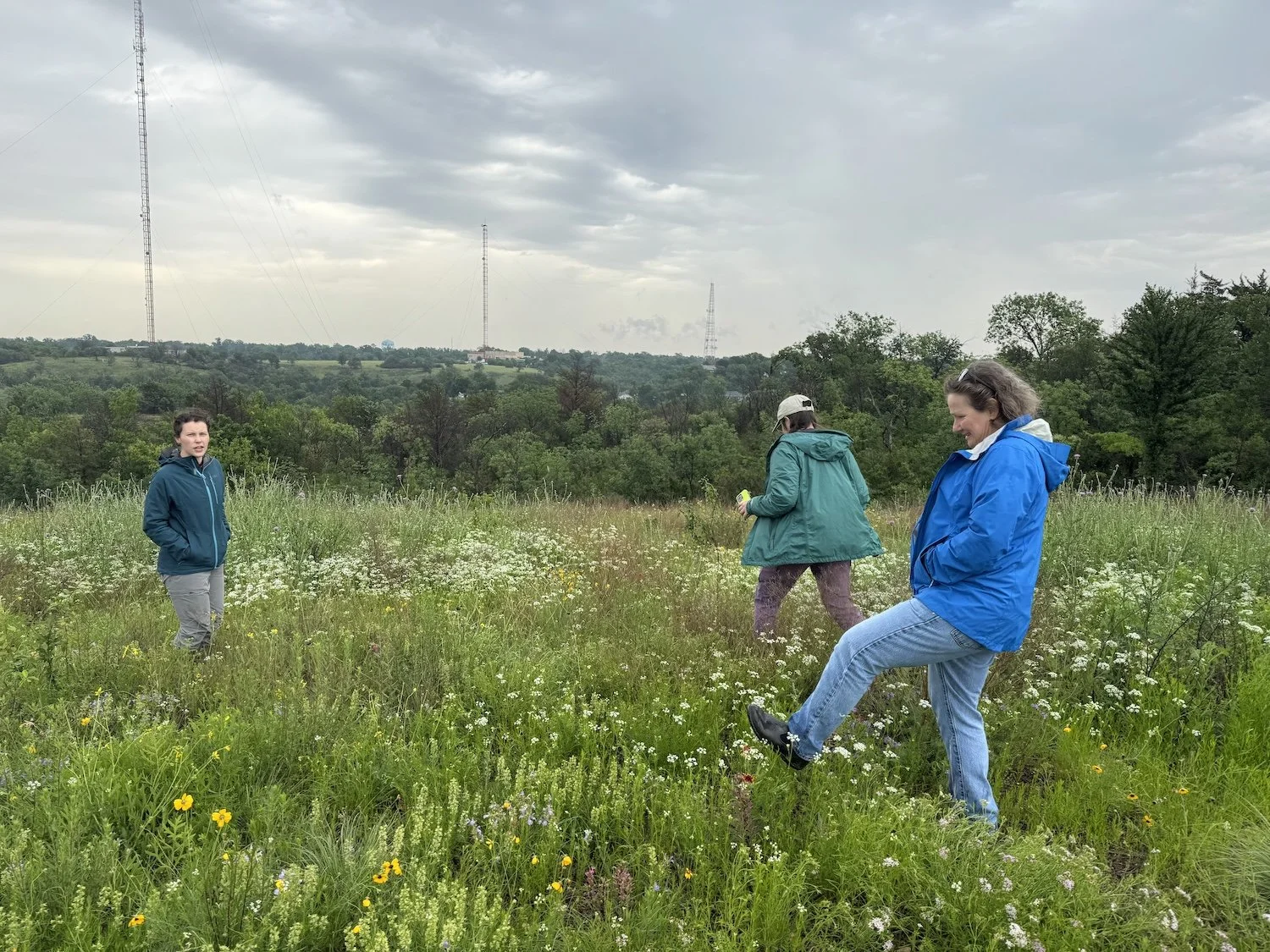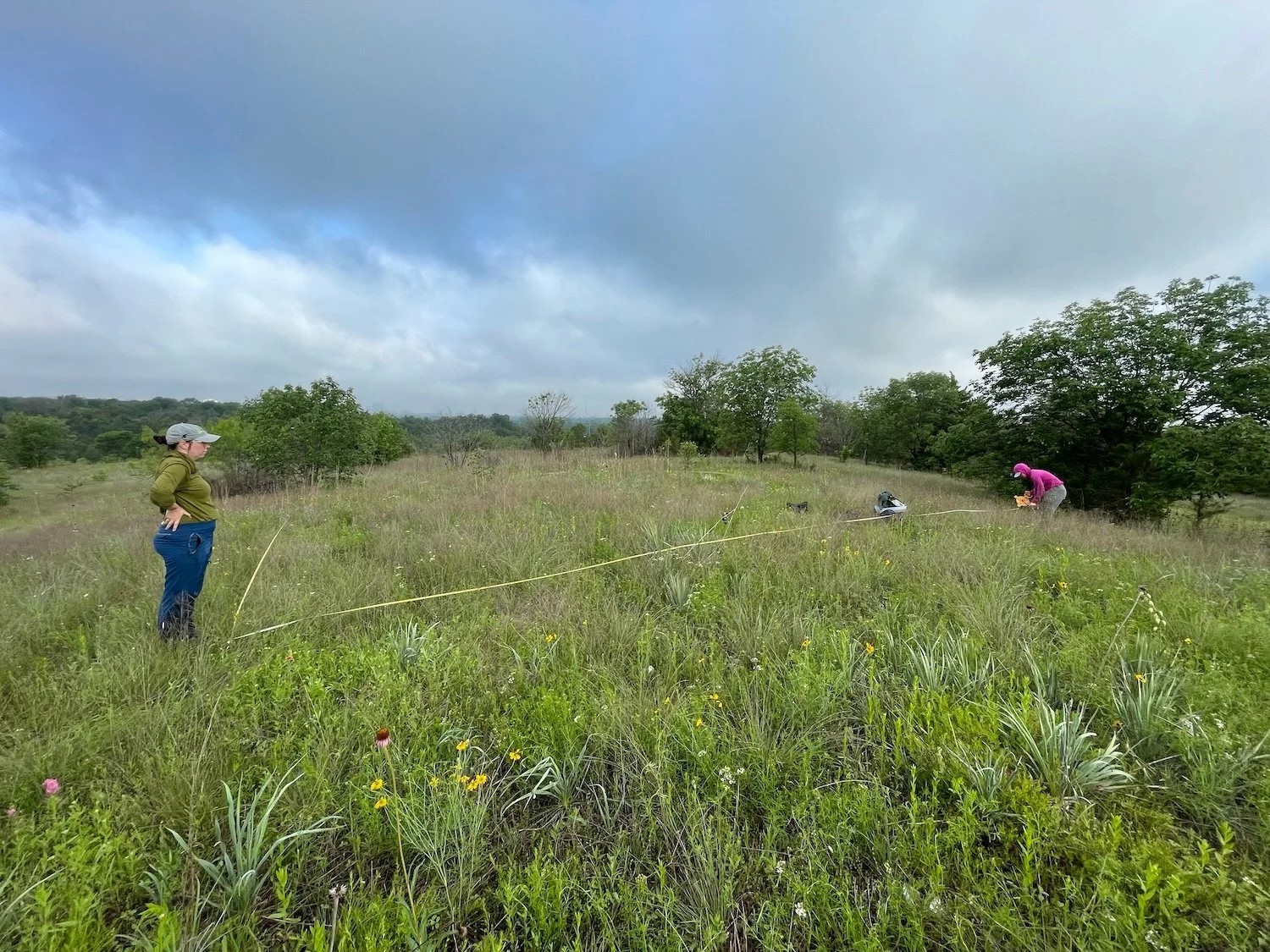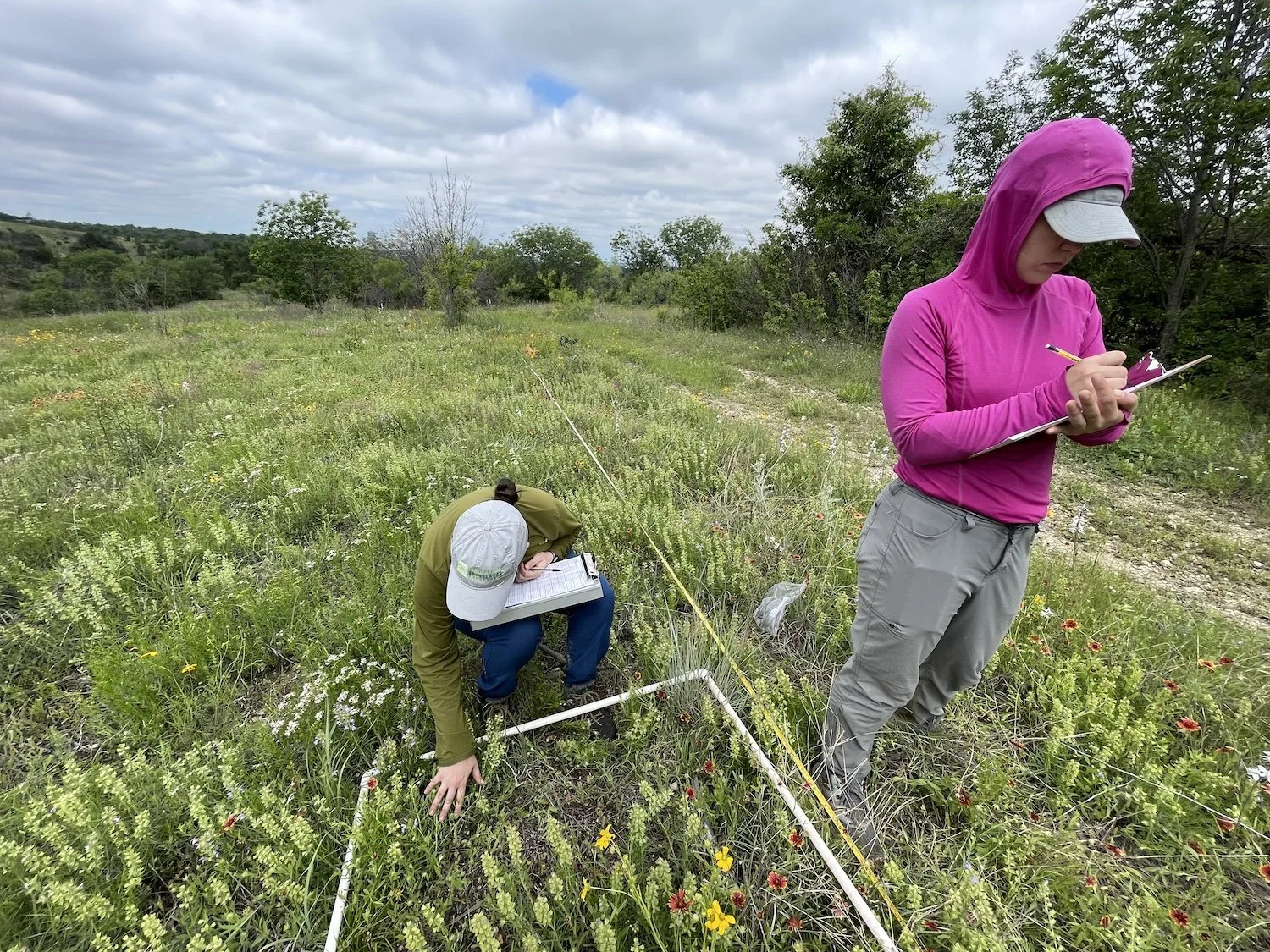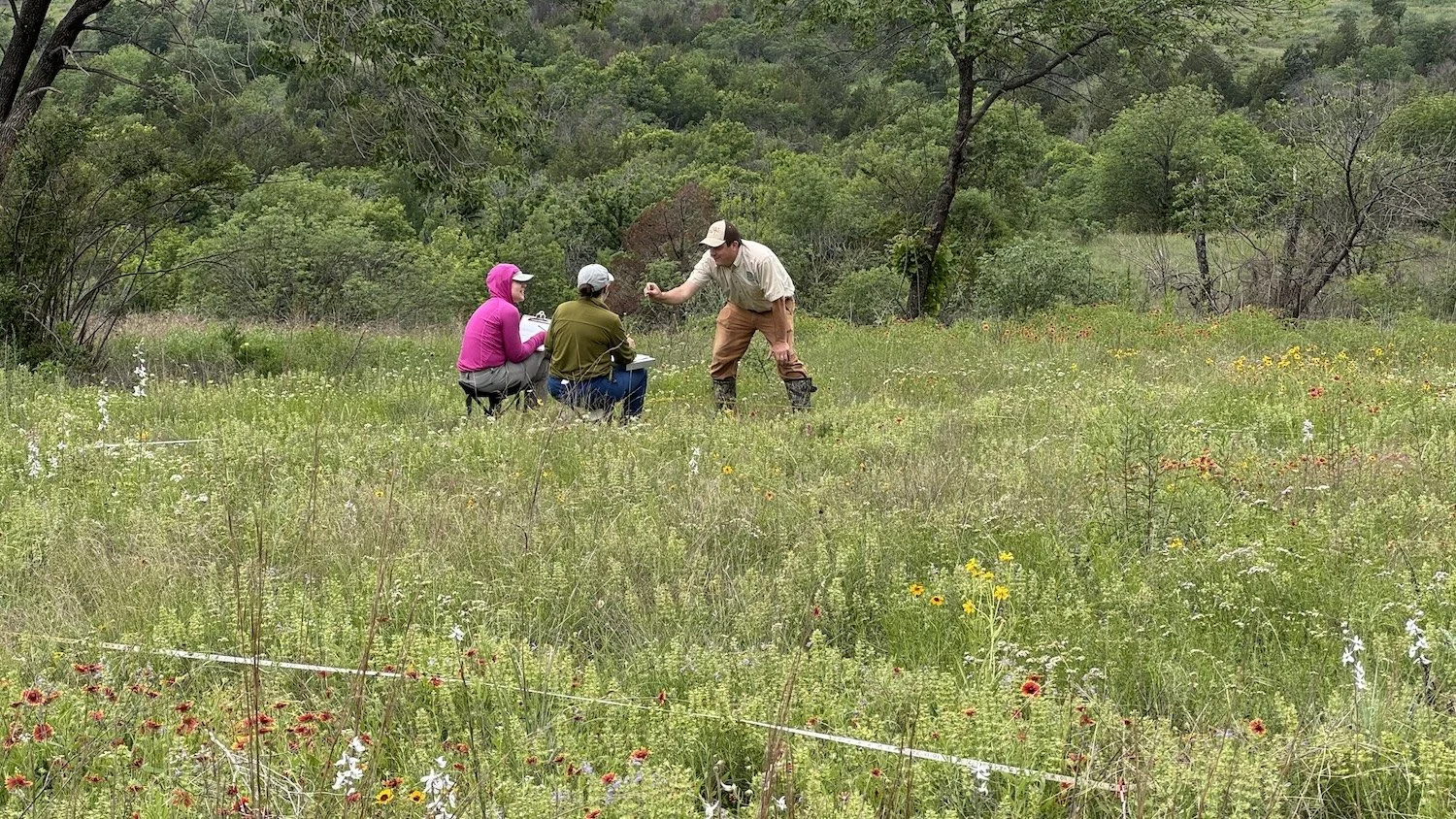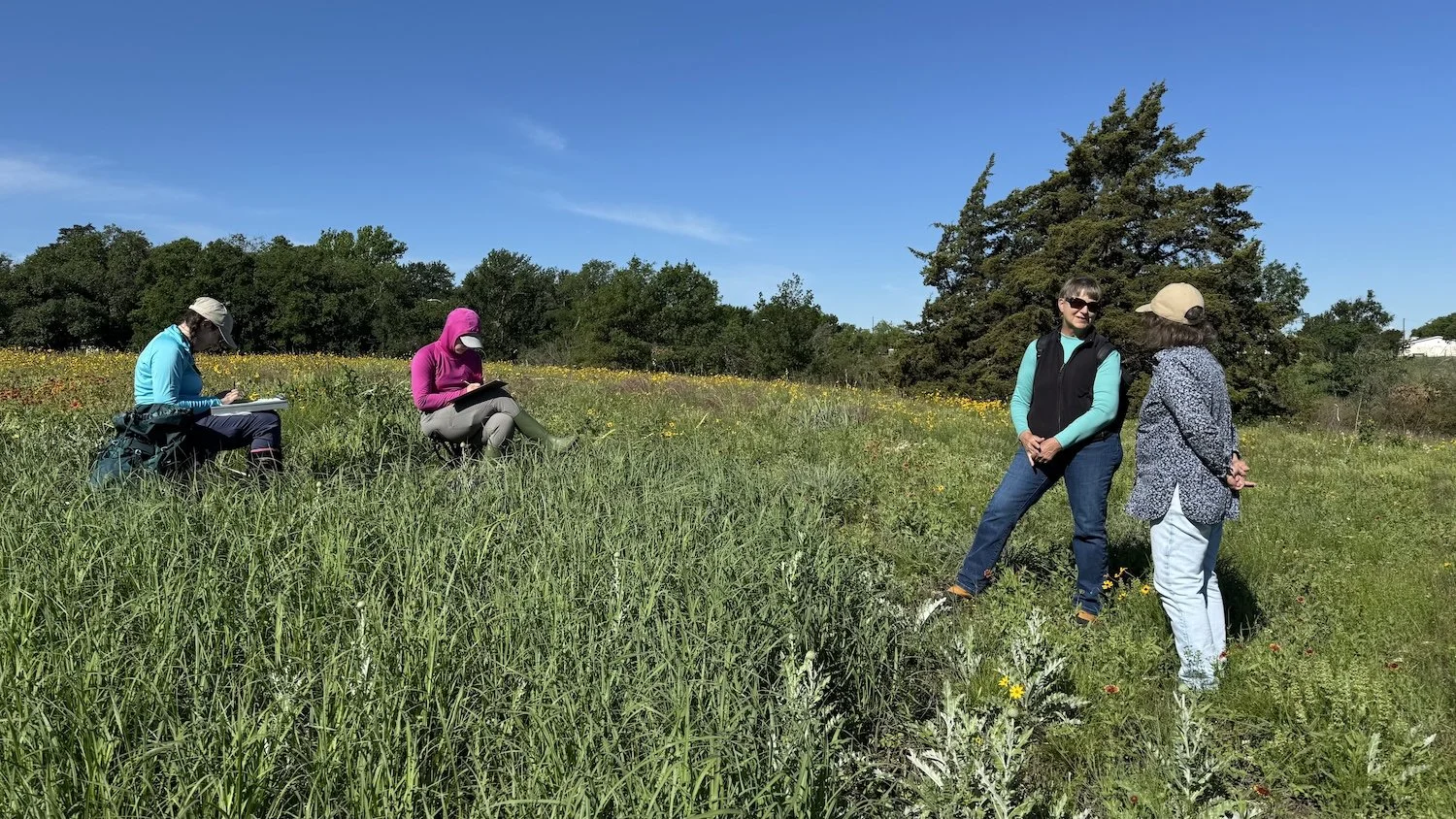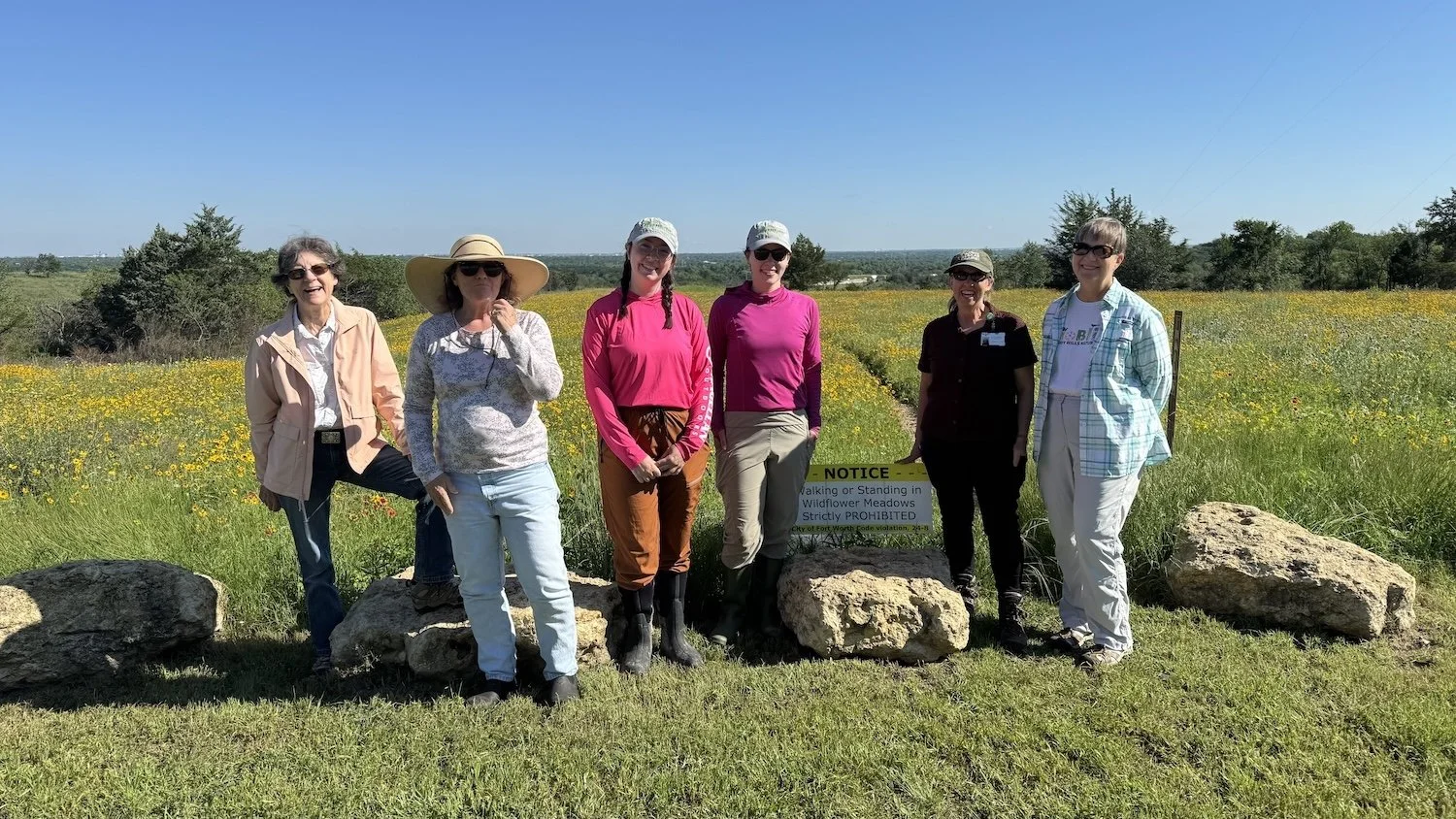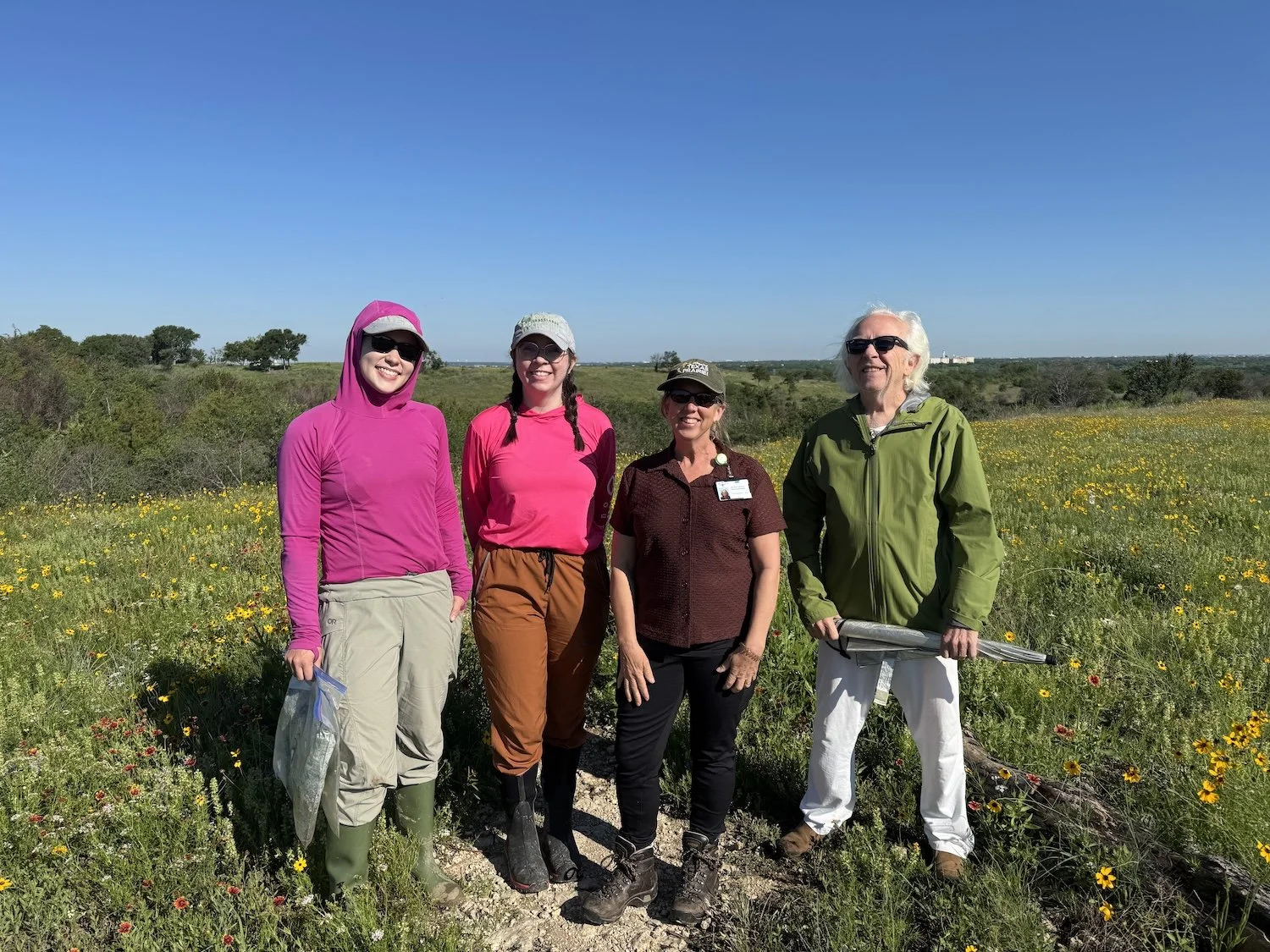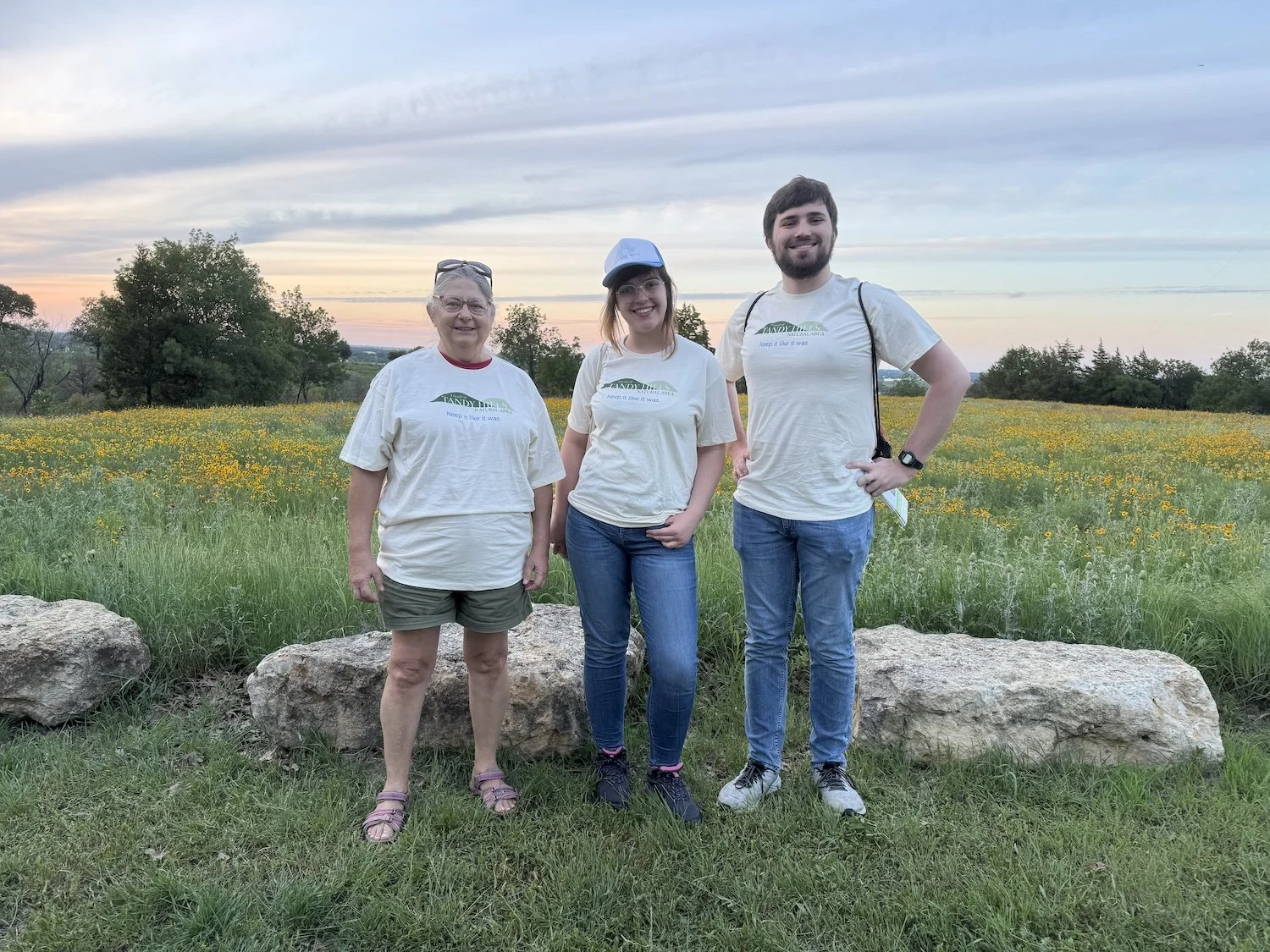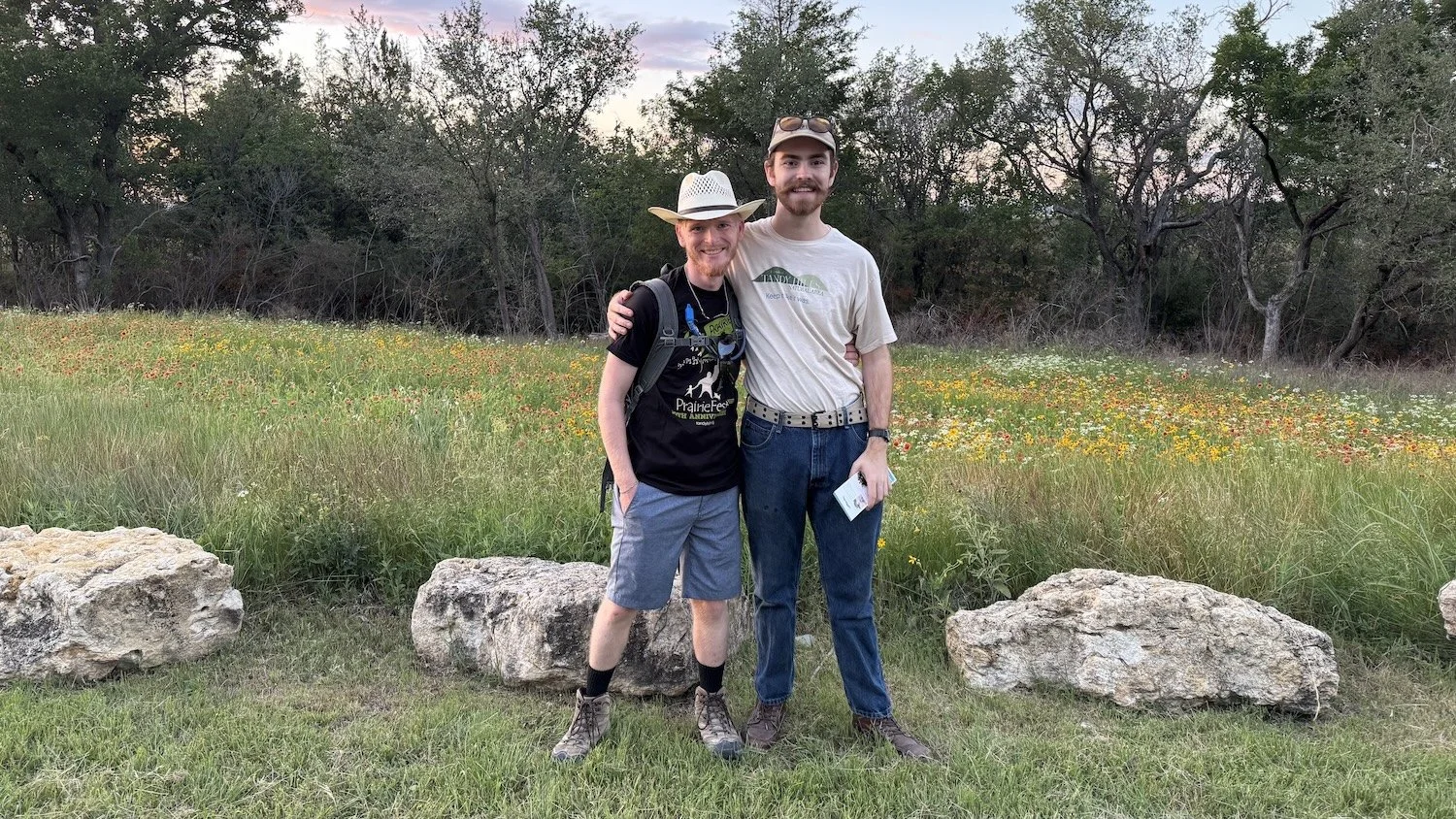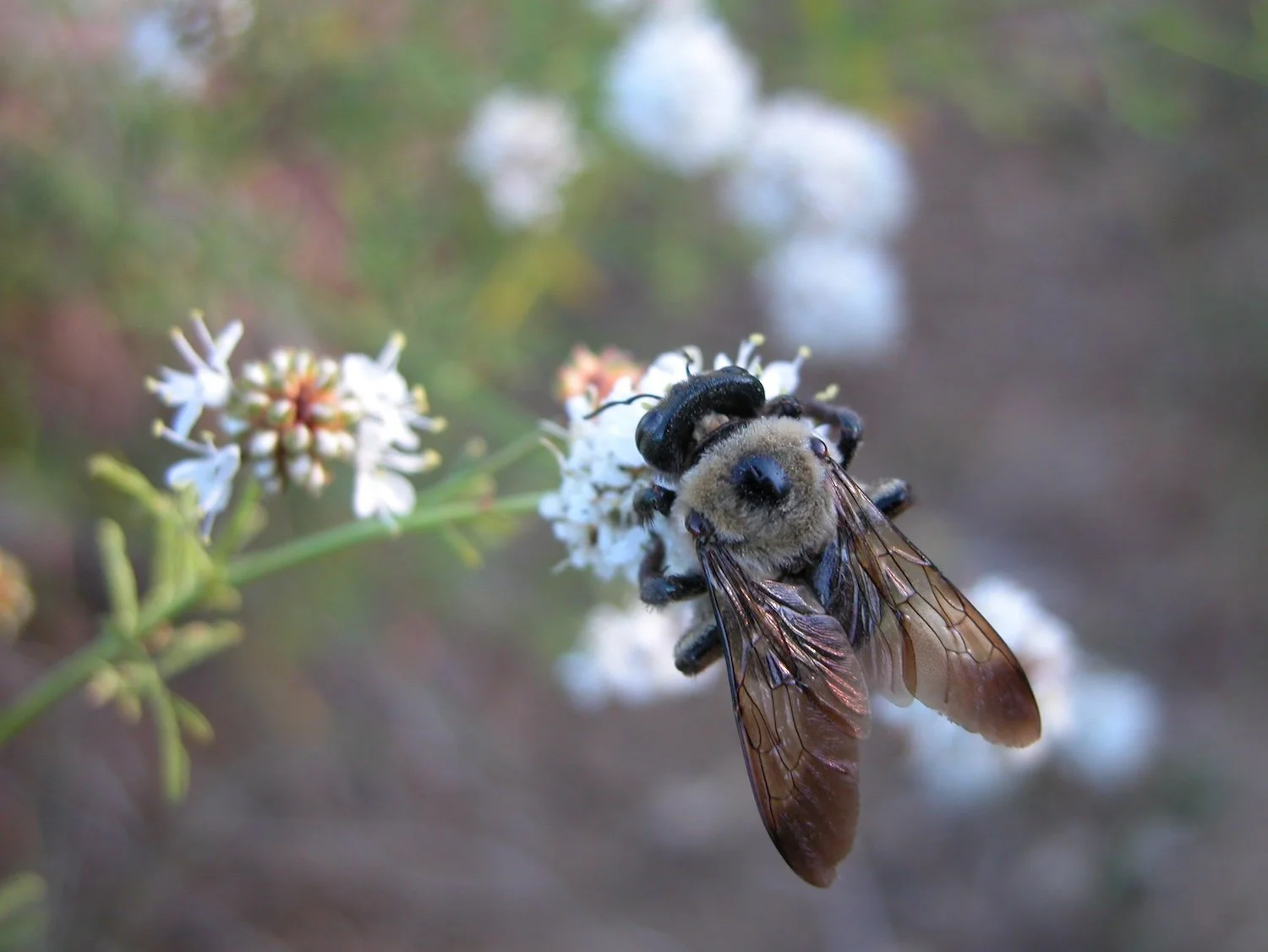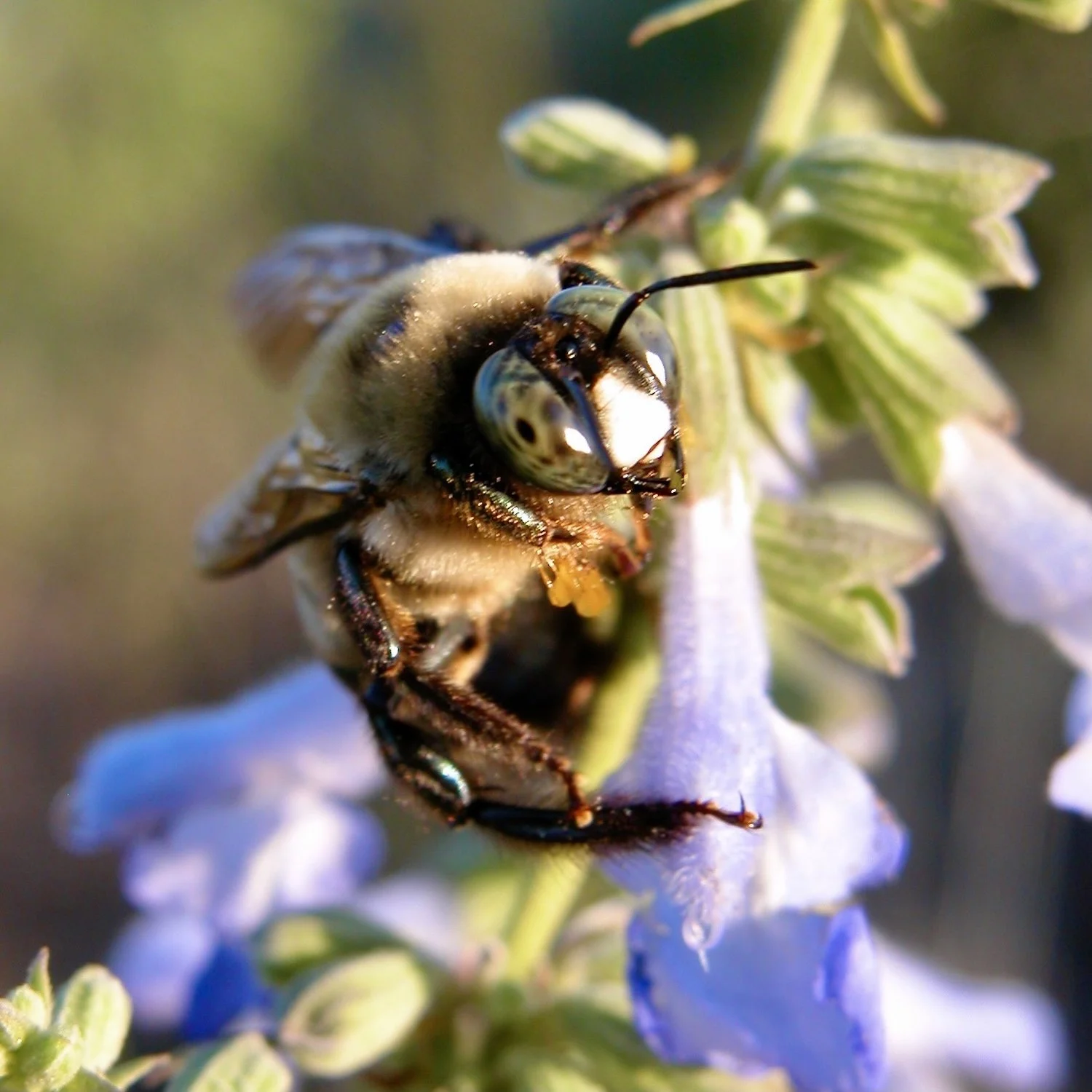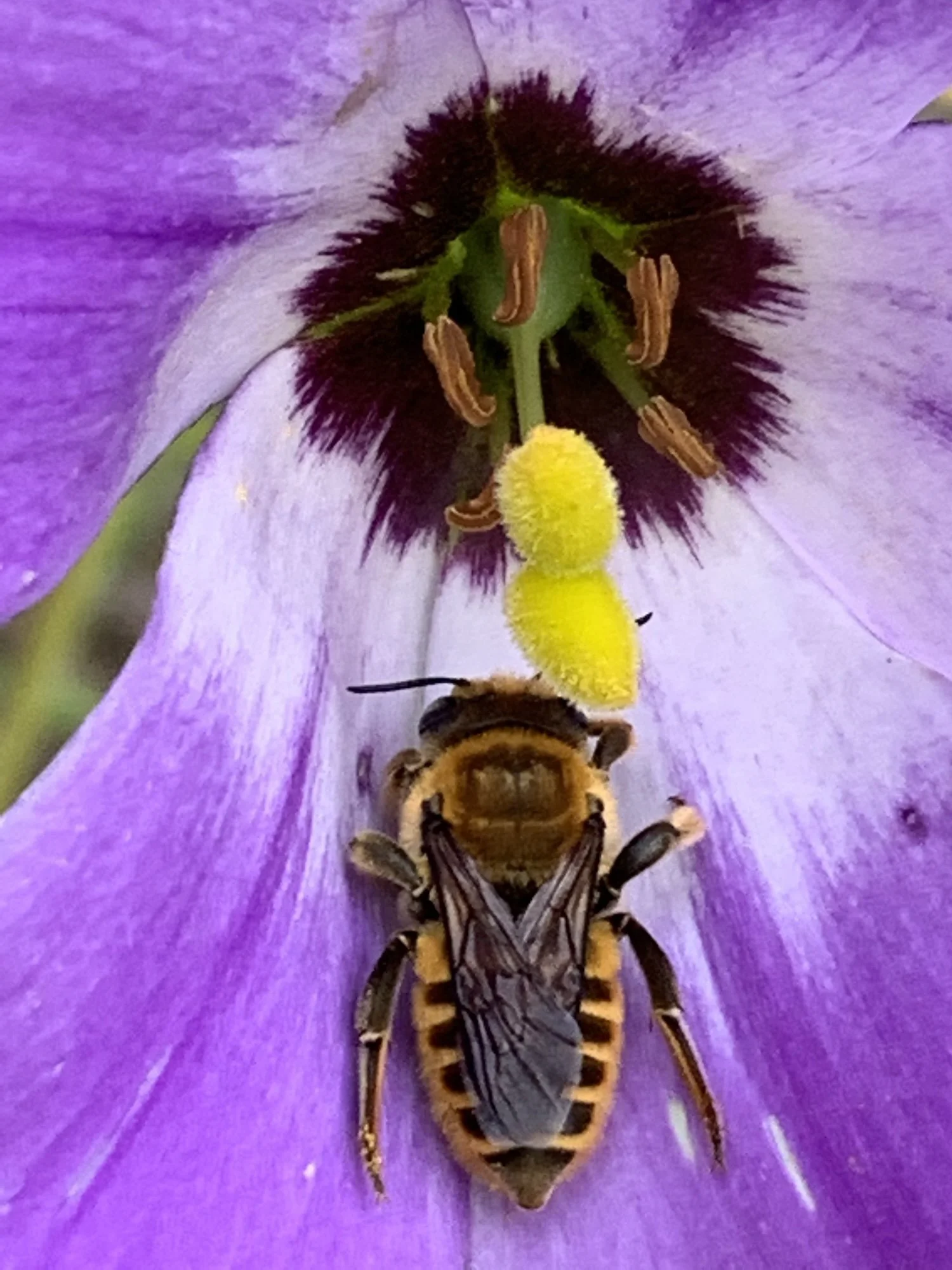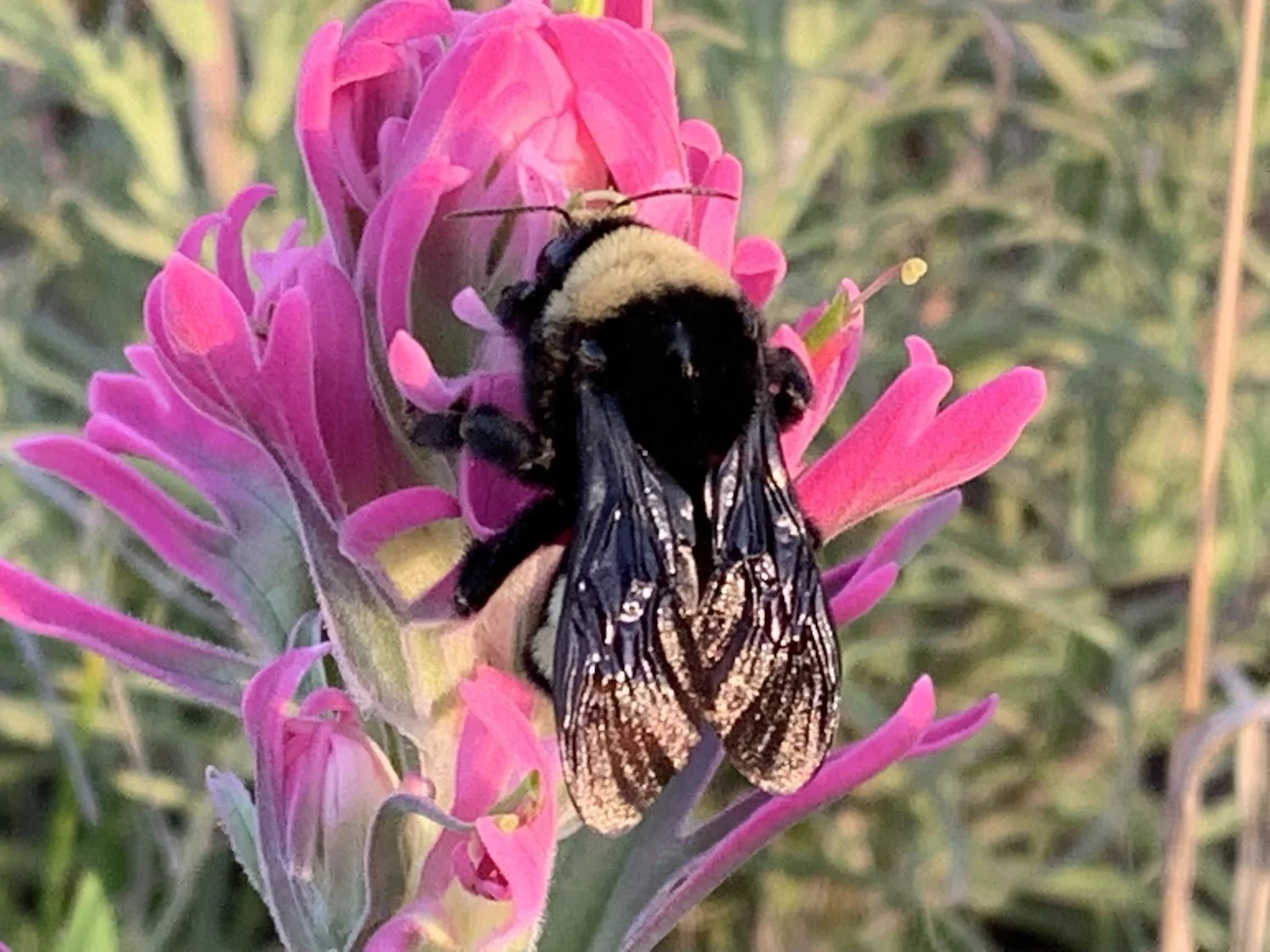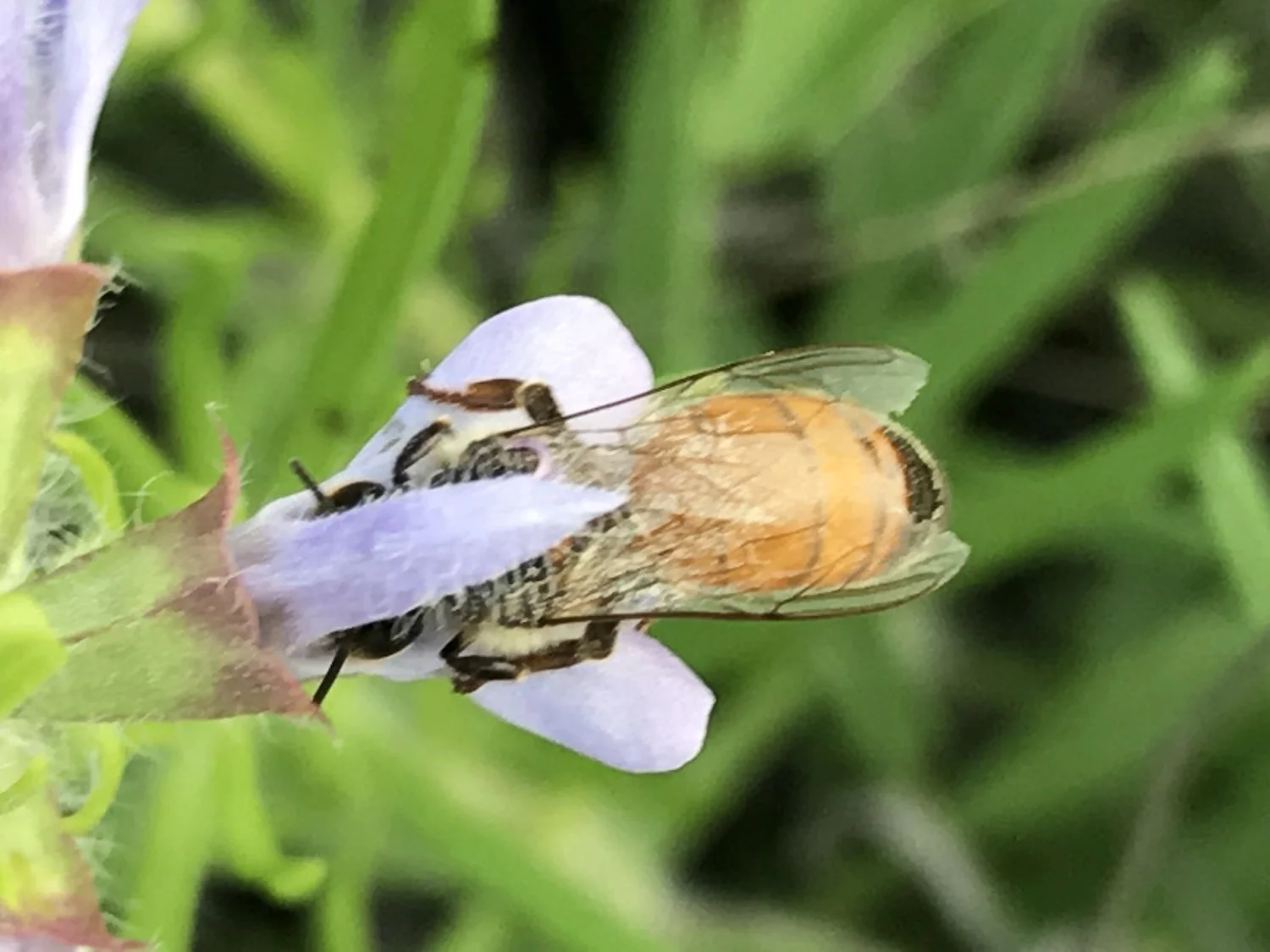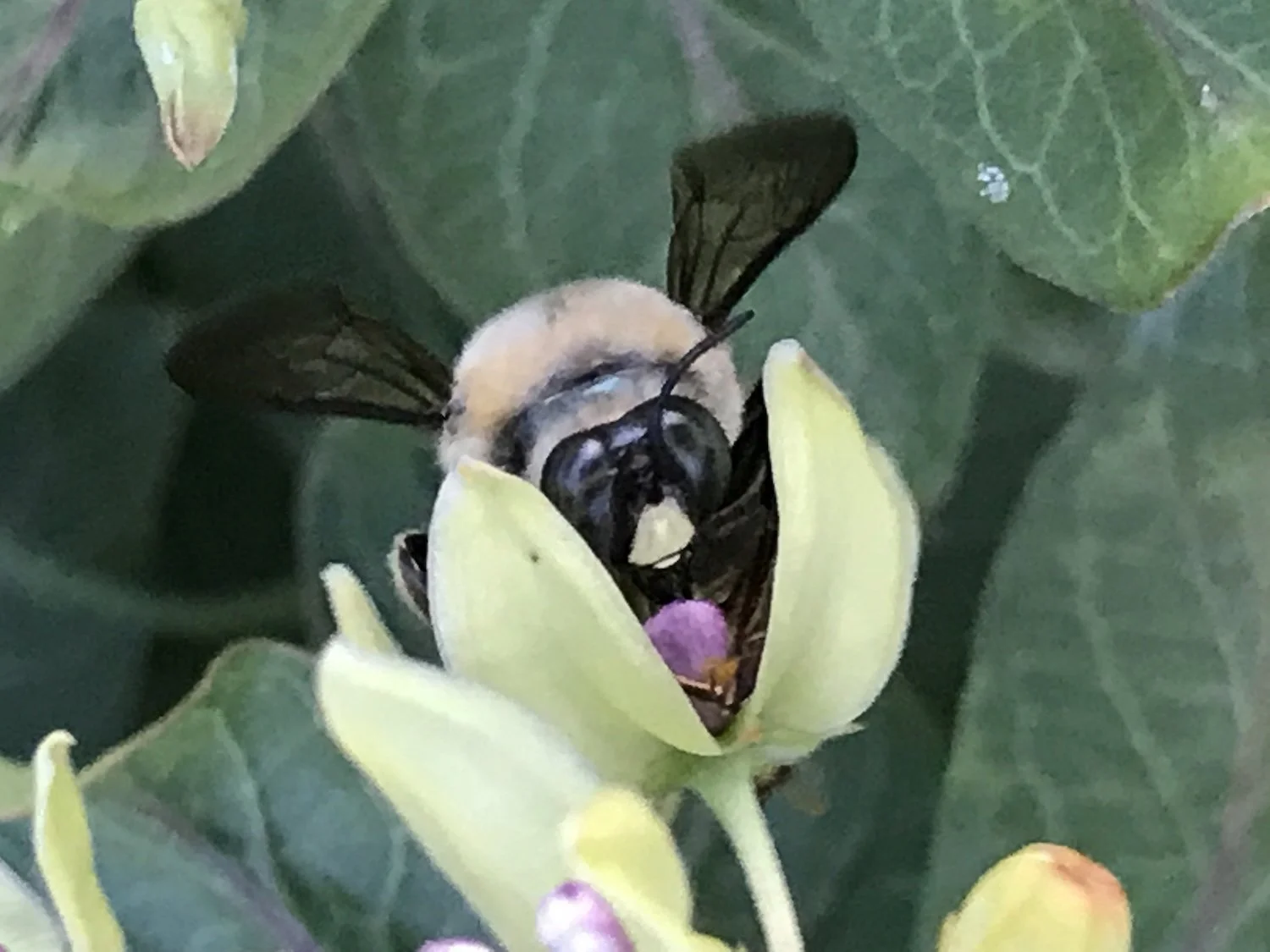Prairie Notes #222 - Rainbow Connections
Prairie Notes are monthly photo/journal observations from Tandy Hills Natural Area by Founder/Director, Don Young. They include field reports, flora and fauna sightings, and more, mixed with a scoop of dry humor and a bit of philosophy.
They are available free to all who get on the FOTHNA email list.
Rainbow Connections
Prairie Notes #222
June 1, 2025
1) Rainbow Connections
2) Field Report - May
3) New Species Report - May
4) Grasslands Study
5) Newsworthy & Noteworthy
6) PrairieSky / StarParty Report
7) Prairie Proverb - Kermit the Frog
June 29, 2019
1) Rainbow Connections
Looking up is one of the maxims of prairie hiking. It’s hard sometimes, when a wonderland of plants are growing at your feet. But it pays to look up. There’s a lot going on above your head. Like, clouds, birds, dragonflies, stars, sunsets, moonrises, and most especially. . . rainbows!
It’s hard to imagine a more democratic natural phenomena. I’ve yet to know anyone who does not get a kick out of seeing them. They are relatively rare but always a welcome sight.
We’ve had a lot of rain this spring keeping the prairies more robust and the creeks running. I’ve yet to witness a rainbow this season but I’m always watching with camera at the ready. Whenever the Sun pops out during or after a rainstorm, I rush out to the prairie to get a good view of the rainbows. It takes a big, wide meadow to see both ends. It is also fairly common to see just pieces of a rainbow.
Describing the science and math behind rainbows is exceedingly complicated. (It takes up more than 7,000 words on the Wiki page.) Lots of things have to happen and at the right time, location and angle. For my purposes, here’s the simple Google A.I. explanation:
“A rainbow is a natural phenomenon that occurs when sunshine shines through raindrops, splitting the light into a spectrum of colors. The colors always appear in the same order: red on the outside, then orange, yellow, green, cyan, blue, and violet on the inside. The raindrops act like tiny prisms, refracting and reflecting the sunlight, which creates the colorful arc seen in the sky.”
It was Isaac Newton in 1672 who divided the spectrum into the seven colors, partly derived from the beliefs of the ancient Greeks who thought there was a connection between the 7 colors, the 7 musical notes, the 7 known objects in the Solar System and the 7 days of the week. That hypothesis did not hold up to later scrutiny, but the research of a Chinese scholar named Shen Kuo (1031–1095) is basically in accord with modern scientific principles.
I’ve also learned that there are about ten types of rainbows including double, full-circle and monochromatic rainbows. Not only that but, there are such things as moonbows, fogbows, sleetbows, even, extraterrestrial rainbows that occur in rare circumstances.
I’m all about connections. What got me thinking about rainbows, other than all the rain we had in May, was when I heard that Kermit the Frog delivered the commencement address at Jim Henson’s alma mater, the University of Maryland. Henson not only invented Kermit, he also wrote and “sang” the song, Rainbow Connection. We also used a slogan at Prairie Fest: Celebrating our connection to the natural world.”
So, when you realize that the earth-bound Tandy Hills prairies and woodlands are connected to an infinite cosmos, all part of an integral whole, it might give you a new perspective about Tandy Hills.
> CLICK on each image below to see it un-cropped and with captions.
> Thanks for reading Prairie Notes and supporting Friends of Tandy Hills Natural Area. Your donations are welcome HERE.
DY
A fading rainbow remnant on May 31, 2021.
2) Field Report - May
By the end of May, meadows blanketed in yellow, Stiff Greenthread, gave way as the grasses started filling in around the wildflowers. But as you can see below, despite the lack of show-stopping views, there is an abundance of beauty in a rainbow of colors to see. We had a LOT of rain in May which kept us busy pulling up invasive species but also kept the meadows vibrant with wildflowers. Come on in and be amazed.
From the street, The Iconic Meadow was looking a little less iconic in mid-May. However, a closer look reveals an amazing array of species.
Broadcast Hill in panorama on a magnificent spring day.
Looking west, across the Iconic Meadow on May 2nd.
Another view of the Iconic Meadow on May 4th.
3) New Species - May
We ended the month of May with 58 new species bringing the new total to 2,416 species. Most were observed in April during the City Nature Challenge but not uploaded until May.
See all of them at the Tandy Hills iNat Project Page HERE.
In mid-May, we reached another milestone with total 2400 species on iNaturalist.
4) Grassland Study
Last December I was contacted by two researchers at the Southeastern Grasslands Institute (SGI) about doing a study at Tandy Hills. Allison Wilson and Ecologist, Gabby LeFevre, based in Little Rock had seen our iNaturalist page and were “extremely impressed” by the photos from Tandy Hills. They are part of a team at SGI that is mapping out grasslands and prairies of the Southeast, and are interested in generating high-quality data in vegetative structure, plant composition, and site characteristics of these grasslands.
Just before their planned trip, their federal funding had been cut. Friends of Tandy Hills offered to take up the slack and sponsor their weeklong visit. They arrived on a rainy day in early May and set out to sample 5 x 20 meter, 10 x 10 meter, or 20 x 20 meter vegetation sampling plots. These plots are designed to gather the information needed to delineate and classify natural communities and correlate them with physical sites.
While here, they were visited by, Kate Morgan and Suzanne Tuttle, members of Cross Timbers Master Naturalists, Michelle Villafranca, Resource Planner at City of Fort Worth and Sam Kieschnick, Urban Biologist with TP&WD. Don and Debora Young hiked them around to get familiar with the park and provide any needed assistance.
Allison and Gabby were even more amazed after seeing the prairies up close. In one 10x10 meter plot, alone, their identified 55 plant species. We await their full report later this fall.
5) Newsworthy & Noteworthy
>>>>>>> Thanks to our Meadow Monitors, we made it through Mother's Day weekend without any major issues. Julie Hall, Alexis Jackson, Blake Painter, Stephen Walton and Calvin Nering helped herd photographers on-trail and reminded them of how special Tandy Hills is. We even gave away a couple of Debora Young’s book, Prairie Wildflowers Illustrated, to folks who cooperated cheerfully. Fortunately, it rained on Memorial Day and the photographers did not show up. <sigh>
>>>>>>> The United Nations has designated May 20th, International Bee Day. Tandy Hills has at least 30 species of bees that help pollinate the millions of wildflowers that grow here. Here's a sampling of these important critters that make Tandy Hills so special
>>>>>>> The City Nature Challenge results are in. As usually happens, the DFW region struts its stuff winning 5th place - worldwide - in number of observations. San Antonio region came in 2nd place, worldwide. Read a nice wrap up by MIchael Smith in, Green Source Texas, HERE.
>>>>>>> Cross Timbers Master Naturalist’s (CTMN) are coordinating an Acoustic Monitoring of Bats project in north Texas that includes Tandy Hills. They have partnered with TP&WD Nature Trackers and a collaborative of researchers at North Atlantic Bat Monitoring Program (NABat). Mary Beth Lampe, Karen Harden and Tina Olivas are leading the project for CTMN.
In early June, CTMN volunteers will place the an ultrasonic microphone monitor in a carefully selected location, the data gets analyzed and a report of the likely species found will be issued. It will help researchers know where bats are, as many are migratory and some are heading north to avoid the extreme heat and droughts. 54% of bats are in peril, and we need them for their help keeping invertebrates in check. Tory Bennett, associate professor of environmental sciences at Texas Christian University, recorded 5 species of bats at the 2016 Tandy Hills BioBlitz.
This project is being executed by Master Naturalists all over the State. Last year the project won the Best Project of the Year at the Texas Master Naturalsts’s Annual meeting. The Dallas Morning News has a report HERE.
L - R: Mary Beth Lampe, Karen Harden & Tina Olivas about to install a monitor at Botanic Gardens. Photo by, Miriam Fauzia, Dallas Morning News.
6) Prairie Sky / Star Party report
We finally had good weather for the June 1st star party. It was well attended with about 8 scopes and members plus 40-45 members of the public. The next star party is June 7th. See the full schedule on the website HERE. Come out and see the night sky and visit with members of the Fort Worth Astronomical Society (FWAS). 2025 is their 10th straight year at Tandy Hills.
Here is the sky-watching commentary for June from FWAS rep, John McCrea:
For our June 7th FWAS/Tandy Hills star party, we will have a combination of spring and summer constellations. The most popular can be seen in the night sky from about late March to late June. As we progress through the season some of the constellations added are Scorpius, Lyra, and Cygnus (in the northeast). The remaining are Ursa Major, Cancer, Leo, Virgo, and Hercules. The summer triangle (Vega, Deneb and Altair) will be visible.
The sun will set at about 8:32 PM (CDT) on June 7th. The moon will be an 11.9-day old waxing gibbous in the constellations Libra (the Scales). There will be only one planet visible during the star party, which is Mars in the constellation Leo (the Lion).
The globular cluster, Ω-Centauri, will still be visible. It will be 5 degrees higher than Canopus was during our March 12th TH star party. It will be at 193O compass heading (south/southwest) or RA 13hr 28’, Dec -47O 37’.
7) Prairie Proverb - Kermit the Frog
“What’s so amazing that keeps us stargazing
And what do we think we might see?
Someday we’ll find it, the rainbow connection
The lovers, the dreamers and me.”
Become a Friend HERE: https://www.tandyhills.org/donate
Prairie Notes© is the official newsletter of Friends of Tandy Hills Natural Area, a 501 (c)(3) non-profit organization. All content by Don Young except where otherwise noted.




